2
RESEARCH METHODOLOGY
45
5
MARKET OVERVIEW
Explore transformative growth in smart grids driven by renewable integration and advanced analytics adoption.
67
5.2.1.1
GRID MODERNIZATION AND DIGITAL TRANSFORMATION
5.2.1.2
RISING INTEGRATION OF RENEWABLE ENERGY SOURCES
5.2.1.3
ADOPTION OF SMART GRID TECHNOLOGIES
5.2.2.1
HIGH INITIAL CAPITAL INVESTMENT
5.2.2.2
COMPLEXITIES ASSOCIATED WITH INTEGRATING POWER GRID INFRASTRUCTURE
5.2.3.1
ADOPTION OF ADVANCED ANALYTICS, AI, AND ML
5.2.3.2
INCREASING DEPLOYMENT OF EVS AND EXPANSION OF CHARGING INFRASTRUCTURE
5.2.4.1
CYBERSECURITY RISKS AND DATA PRIVACY CONCERNS
5.2.4.2
REGULATORY CHALLENGES AND COMPLIANCE COMPLEXITIES
5.3
TRENDS/DISRUPTIONS IMPACTING CUSTOMER BUSINESS
5.6
INVESTMENT AND FUNDING SCENARIO
5.7
SUPPLY CHAIN ANALYSIS
5.8.1.2
ADVANCED METERING INFRASTRUCTURE
5.8.2
ADJACENT TECHNOLOGIES
5.8.2.1
GEOGRAPHIC INFORMATION SYSTEMS
5.8.2.2
DISTRIBUTED ENERGY RESOURCES MANAGEMENT SYSTEMS
5.8.3
COMPLEMENTARY TECHNOLOGIES
5.8.3.1
AI & ML ALGORITHMS
5.8.3.2
5G COMMUNICATION NETWORKS
5.9
KEY CONFERENCES AND EVENTS, 2025–2026
5.10
TARIFF AND REGULATORY LANDSCAPE
5.10.1
TARIFF ANALYSIS (HS CODE 853710)
5.10.2
REGULATORY BODIES, GOVERNMENT AGENCIES, AND OTHER ORGANIZATIONS
5.10.3
CODES AND REGULATIONS
5.11.1
IMPORT DATA (HS CODE 853710)
5.11.2
EXPORT DATA (HS CODE 853710)
5.13
PORTER'S FIVE FORCES ANALYSIS
5.13.1
THREAT OF NEW ENTRANTS
5.13.2
THREAT OF SUBSTITUTES
5.13.3
BARGAINING POWER OF SUPPLIERS
5.13.4
BARGAINING POWER OF BUYERS
5.13.5
INTENSITY OF COMPETITIVE RIVALRY
5.14
KEY STAKEHOLDERS AND BUYING CRITERIA
5.14.1
KEY STAKEHOLDERS IN BUYING PROCESS
5.15.1
ENHANCED GRID RESILIENCE AND SAFETY: SA POWER NETWORKS' JOURNEY WITH SCHNEIDER ELECTRIC'S ECOSTRUXURE ADMS
5.15.2
DIGITAL BACKBONE OF GRID MODERNIZATION: STRATEGIC INTEGRATION OF ADMS AND GIS BY US UTILITY
5.15.3
SEAMLESS INTEGRATION OF OSII ADMS TO MODERNIZE GRID OPERATIONS FOR LEADING UTILITY PROVIDER BY HCLTECH
5.16
IMPACT OF GEN AI/AI ON ADMS MARKET
5.17
MACROECONOMIC OUTLOOK FOR ADMS MARKET
5.17.2
RESEARCH & DEVELOPMENT EXPENDITURE
5.17.3
POWER SECTOR GROWTH
5.18
IMPACT OF 2025 US TARIFF – OVERVIEW
5.20
PRICE IMPACT ANALYSIS
5.21
IMPACT ON COUNTRY/REGION
5.22
IMPACT ON END-USE INDUSTRIES
6
ADVANCED DISTRIBUTION MANAGEMENT SYSTEM MARKET, BY DEPLOYMENT MODE
Market Size & Growth Rate Forecast Analysis to 2030 in USD Million | 6 Data Tables
120
6.2.1
RISING NEED FOR DATA SOVEREIGNTY AND INFRASTRUCTURE CONTROL IN LEGACY UTILITY ENVIRONMENTS
6.3.1
GROWING DEMAND FOR SCALABLE, COST-EFFICIENT, AND REMOTE GRID MANAGEMENT SOLUTIONS
7
ADVANCED DISTRIBUTION MANAGEMENT SYSTEM MARKET, BY END USER
Market Size & Growth Rate Forecast Analysis to 2030 in USD Million | 16 Data Tables
125
7.2.1
MODERNIZING GRID INFRASTRUCTURE AND ENHANCING POWER DISTRIBUTION EFFICIENCY TO MEET RISING ELECTRICITY DEMANDS
7.3.1
STRENGTHENING NATIONAL INFRASTRUCTURE AND RESILIENCE WITH REAL-TIME POWER SYSTEM MANAGEMENT AND SMART GRID INITIATIVES TO DRIVE DEMAND
7.4.1
RISING DEMAND FOR INTELLIGENT POWER MANAGEMENT TO MINIMIZE DOWNTIME AND OPERATIONAL COSTS TO DRIVE MARKET
7.5
TRANSPORTATION & LOGISTICS
7.5.1
ENSURING CONTINUOUS POWER FOR TRAFFIC SYSTEMS AND SUPPORTING EV INTEGRATION TO DRIVE DEMAND
7.6.1
MAINTAINING UNINTERRUPTED POWER FOR CRITICAL COMMUNICATION SYSTEMS AND DATA FLOW ACROSS SMART NETWORKS TO DRIVE DEMAND
7.7.1
REDUCING DOWNTIME AND ENERGY WASTAGE BY ENABLING REAL-TIME ENERGY MONITORING AND FAULT MANAGEMENT IN HIGH-DENSITY ENVIRONMENTS TO DRIVE DEMAND
8
ADVANCED DISTRIBUTION MANAGEMENT SYSTEM MARKET, BY FUNCTIONALITY
Market Size & Growth Rate Forecast Analysis to 2030 in USD Million | 10 Data Tables
137
8.2
SUPERVISORY CONTROL & DATA ACQUISITION
8.2.1
REAL-TIME GRID VISIBILITY AND AUTOMATION DRIVING SCADA INTEGRATION IN ADVANCED DISTRIBUTION MANAGEMENT SYSTEM PLATFORMS
8.3
FAULT LOCATION, ISOLATION, AND SERVICE RESTORATION
8.3.1
RISING NEED FOR AUTOMATED FAULT DETECTION AND REDUCED OUTAGE DURATIONS DRIVING DEMAND
8.4
VOLTAGE/VAR OPTIMIZATION/CONTROL
8.4.1
DEMAND FOR ENERGY EFFICIENCY AND LOAD BALANCING BOOSTING VVO DEPLOYMENT
8.5
DISTRIBUTION NETWORK APPLICATION
8.5.1
COMPLEXITY IN GRID OPERATIONS AND DER INTEGRATION ELEVATING NEED FOR NETWORK MODELING
9
ADVANCED DISTRIBUTION MANAGEMENT SYSTEM MARKET, BY OFFERING
Market Size & Growth Rate Forecast Analysis to 2030 in USD Million | 36 Data Tables
144
9.2.1
ENERGY MANAGEMENT SYSTEMS
9.2.1.1
EMS TO IMPROVE ENERGY EFFICIENCY AND PROVIDE REAL-TIME ANALYTICS
9.2.2.1
NEED TO REDUCE FREQUENCY OF POWER OUTAGES TO SURGE DEMAND FOR OMS
9.2.3
CUSTOMER INFORMATION SYSTEM
9.2.3.1
INCREASED DEPLOYMENT OF SMART INFRASTRUCTURE TO DRIVE MARKET
9.2.4
GEOGRAPHIC INFORMATION SYSTEM
9.2.4.1
NEED TO CAPTURE GEOGRAPHIC INFORMATION TO SUPPORT REAL-TIME DECISION-MAKING
9.2.5
DISTRIBUTED ENERGY RESOURCES MANAGEMENT SYSTEM
9.2.5.1
EFFICIENT DISTRIBUTION AND TRANSMISSION OF RENEWABLE ENERGY RESOURCES TO DRIVE MARKET
9.2.6
METER DATA MANAGEMENT SYSTEM
9.2.6.1
REDUCTION OF OPERATIONAL COST TO DRIVE DEMAND
9.3.1
PROFESSIONAL SERVICES
9.3.1.1
NEED FOR PROFESSIONAL EXPERTS TO DEPLOY RIGHT SOLUTION DRIVES DEMAND
9.3.2.1
OPTIMIZING ENERGY DISTRIBUTION AND RISK MANAGEMENT WITH SMART GRID CONSULTING SERVICES TO DRIVE DEMAND
9.3.3
INTEGRATION & DEPLOYMENT
9.3.3.1
STREAMLINING ADMS IMPLEMENTATION THROUGH ENHANCED INTEGRATION & DEPLOYMENT SERVICES TO DRIVE DEMAND
9.3.4
SUPPORT & MAINTENANCE
9.3.4.1
EMPOWERING ADMS PERFORMANCE WITH PROACTIVE SUPPORT & MAINTENANCE SOLUTIONS TO DRIVE MARKET
9.3.5.1
EFFICIENT MANAGEMENT OF ENTIRE ADMS SOLUTION IN ALL APPLICATION AREAS TO DRIVE DEMAND
10
ADVANCED DISTRIBUTION MANAGEMENT SYSTEM MARKET, BY ORGANIZATION SIZE
Market Size & Growth Rate Forecast Analysis to 2030 in USD Million | 6 Data Tables
162
10.2.1
RISING NEED FOR CENTRALIZED GRID MANAGEMENT AND REAL-TIME DECISION-MAKING IN COMPLEX UTILITY NETWORKS TO DRIVE DEMAND
10.3.1
INCREASING DEMAND FOR COST-EFFECTIVE, SCALABLE, AND CLOUD-BASED GRID SOLUTIONS TO DRIVE DEMAND
11
ADVANCED DISTRIBUTION MANAGEMENT SYSTEM MARKET, BY REGION
Comprehensive coverage of 8 Regions with country-level deep-dive of 15 Countries | 428 Data Tables.
167
11.2.1.1
GROWING NEED TO MODERNIZE AGING SYSTEMS AND ACCOMMODATE RISING ELECTRICITY DEMAND TO DRIVE MARKET
11.2.2.1
COMMITMENT TO REDUCING GREENHOUSE GAS EMISSIONS TO FOSTER MARKET GROWTH
11.2.3.1
RAPID ADOPTION OF SMART GRID TECHNOLOGIES TO MODERNIZE ELECTRICAL INFRASTRUCTURE TO SUPPORT MARKET GROWTH
11.3.1.1
EXPANDING RENEWABLE ENERGY SECTOR TO FUEL MARKET GROWTH
11.3.2.1
GOVERNMENT-LED INITIATIVES TO MODERNIZE POWER GRID INFRASTRUCTURE TO DRIVE MARKET
11.3.3.1
RISING EMPHASIS ON DIGITIZING INFRASTRUCTURE TO DRIVE MARKET
11.3.4
REST OF ASIA PACIFIC
11.4.1.1
GROWING EMPHASIS ON PHASING OUT NUCLEAR POWER TO DRIVE MARKET
11.4.2.1
FOCUS ON ACHIEVING NET-ZERO CARBON EMISSIONS TO DRIVE MARKET
11.4.3.1
SURGING RENEWABLE ENERGY PRODUCTION TO DRIVE MARKET
11.4.4.1
INCREASE IN RENEWABLE ENERGY INSTALLATIONS TO DRIVE MARKET
11.5
MIDDLE EAST & AFRICA
11.5.1.1
ACCELERATED ADOPTION OF ADVANCED GRID MANAGEMENT SOLUTIONS TO DRIVE MARKET
11.5.2.1
INTEGRATION OF RENEWABLE ENERGY SOURCES INTO NATIONAL GRID TO DRIVE MARKET
11.5.3
REST OF MIDDLE EAST & AFRICA
11.6.1.1
TRANSFORMATION OF ENERGY SECTOR TO DRIVE MARKET
11.6.2.1
GROWING NEED TO ADDRESS CHALLENGES ASSOCIATED WITH ENERGY DISTRIBUTION TO DRIVE MARKET
11.6.3
REST OF SOUTH AMERICA
12
COMPETITIVE LANDSCAPE
Discover key strategies and market dynamics shaping the competitive landscape through 2024.
311
12.2
KEY PLAYER STRATEGIES/RIGHT TO WIN, 2021–2024
12.3
MARKET SHARE ANALYSIS, 2024
12.4
REVENUE ANALYSIS, 2019–2023
12.5
COMPANY VALUATION AND FINANCIAL METRICS, 2025
12.7
COMPANY EVALUATION MATRIX: KEY PLAYERS, 2024
12.7.5
COMPANY FOOTPRINT: KEY PLAYERS, 2024
12.7.5.1
COMPANY FOOTPRINT
12.7.5.2
REGION FOOTPRINT
12.7.5.3
OFFERING FOOTPRINT
12.7.5.4
DEPLOYMENT TYPE FOOTPRINT
12.7.5.5
FUNCTIONALITY FOOTPRINT
12.8
COMPANY EVALUATION MATRIX: STARTUPS/SMES, 2024
12.8.1
PROGRESSIVE COMPANIES
12.8.2
RESPONSIVE COMPANIES
12.8.5
COMPETITIVE BENCHMARKING: STARTUPS/SMES, 2024
12.8.5.1
DETAILED LIST OF KEY STARTUPS/SMES
12.8.5.2
COMPETITIVE BENCHMARKING OF KEY STARTUPS/SMES
12.9
COMPETITIVE SCENARIO
12.9.1
ADVANCED DISTRIBUTION MANAGEMENT SYSTEM MARKET: PRODUCT LAUNCHES, JANUARY 2021–DECEMBER 2024
12.9.2
ADVANCED DISTRIBUTION MANAGEMENT SYSTEM MARKET: DEALS, JANUARY 2021–DECEMBER 2024
12.9.3
OTHER DEVELOPMENTS
13
COMPANY PROFILES
In-depth Company Profiles of Leading Market Players with detailed Business Overview, Product and Service Portfolio, Recent Developments, and Unique Analyst Perspective (MnM View)
335
13.1.1.1
BUSINESS OVERVIEW
13.1.1.2
PRODUCTS/SOLUTIONS/SERVICES OFFERED
13.1.1.3
RECENT DEVELOPMENTS
13.1.2
HITACHI ENERGY LTD.
13.1.3
SCHNEIDER ELECTRIC
13.1.5
HONEYWELL INTERNATIONAL INC.
13.1.7
MITSUBISHI ELECTRIC
13.1.12
ASPEN TECHNOLOGY INC
13.1.14
ROCKWELL AUTOMATION, INC.
13.1.15
SURVALENT TECHNOLOGY CORPORATION
13.2.3
PXISE ENERGY SOLUTIONS
13.2.6
KRAKEN TECHNOLOGIES LIMITED
14.1
INSIGHTS FROM INDUSTRY EXPERTS
14.3
KNOWLEDGESTORE: MARKETSANDMARKETS’ SUBSCRIPTION PORTAL
14.4
CUSTOMIZATION OPTIONS
TABLE 1
INCLUSIONS AND EXCLUSIONS
TABLE 2
ADVANCED DISTRIBUTION MANAGEMENT SYSTEM MARKET SIZE ESTIMATION METHODOLOGY (DEMAND-SIDE)
TABLE 3
ADMS MARKET: RISK ANALYSIS
TABLE 4
ADVANCED DISTRIBUTION MANAGEMENT SYSTEM: MARKET SNAPSHOT
TABLE 5
ROLE OF COMPANIES IN ADMS MARKET ECOSYSTEM
TABLE 6
ADMS MARKET: KEY CONFERENCES AND EVENTS, 2025–2026
TABLE 7
MFN TARIFF FOR HS CODE 853710-COMPLIANT PRODUCTS, BY COUNTRY, 2024
TABLE 8
NORTH AMERICA: REGULATORY BODIES, GOVERNMENT AGENCIES, AND OTHER ORGANIZATIONS
TABLE 9
EUROPE: REGULATORY BODIES, GOVERNMENT AGENCIES, AND OTHER ORGANIZATIONS
TABLE 10
ASIA PACIFIC: REGULATORY BODIES, GOVERNMENT AGENCIES, AND OTHER ORGANIZATIONS
TABLE 11
MIDDLE EAST & AFRICA: REGULATORY BODIES, GOVERNMENT AGENCIES, AND OTHER ORGANIZATIONS
TABLE 12
SOUTH AMERICA: REGULATORY BODIES, GOVERNMENT AGENCIES, AND OTHER ORGANIZATIONS
TABLE 13
ADMS MARKET: CODES AND REGULATIONS
TABLE 14
IMPORT DATA FOR HS CODE 853710-COMPLIANT PRODUCTS, BY COUNTRY, 2020–2024 (USD THOUSAND)
TABLE 15
EXPORT DATA FOR HS CODE 853710-COMPLIANT PRODUCTS, BY COUNTRY, 2020–2024 (USD THOUSAND)
TABLE 16
ADMS MARKET: KEY PATENTS, 2021–2024
TABLE 17
PORTER'S FIVE FORCES ANALYSIS
TABLE 18
INFLUENCE OF KEY STAKEHOLDERS ON BUYING PROCESS FOR TOP THREE END USERS
TABLE 19
KEY BUYING CRITERIA FOR TOP THREE END USERS
TABLE 20
US ADJUSTED RECIPROCAL TARIFF RATES
TABLE 21
KEY PRODUCT-RELATED TARIFF EFFECTIVE FOR ADVANCED DISTRIBUTION MANAGEMENT SYSTEM
TABLE 22
EXPECTED CHANGE IN PRICES AND LIKELY IMPACT ON END USER MARKET DUE TO TARIFF IMPACT
TABLE 23
ADVANCED DISTRIBUTION MANAGEMENT SYSTEM MARKET, BY DEPLOYMENT MODE, 2021–2024 (USD MILLION)
TABLE 24
ADVANCED DISTRIBUTION MANAGEMENT SYSTEM MARKET, BY DEPLOYMENT MODE, 2025–2030 (USD MILLION)
TABLE 25
ON-PREMISES: ADVANCED DISTRIBUTION MANAGEMENT SYSTEM MARKET, BY REGION, 2021–2024 (USD MILLION)
TABLE 26
ON-PREMISES: ADVANCED DISTRIBUTION MANAGEMENT SYSTEM MARKET, BY REGION, 2025–2030 (USD MILLION)
TABLE 27
CLOUD-BASED: ADVANCED DISTRIBUTION MANAGEMENT SYSTEM MARKET, BY REGION, 2021–2024 (USD MILLION)
TABLE 28
CLOUD-BASED: ADVANCED DISTRIBUTION MANAGEMENT SYSTEM MARKET, BY REGION, 2025–2030 (USD MILLION)
TABLE 29
ADVANCED DISTRIBUTION MANAGEMENT SYSTEM MARKET, BY END USER, 2021–2024 (USD MILLION)
TABLE 30
ADVANCED DISTRIBUTION MANAGEMENT SYSTEM MARKET, BY END USER, 2025–2030 (USD MILLION)
TABLE 31
ENERGY & UTILITIES: ADVANCED DISTRIBUTION MANAGEMENT SYSTEM MARKET, BY REGION, 2021–2024 (USD MILLION)
TABLE 32
ENERGY & UTILITIES: ADVANCED DISTRIBUTION MANAGEMENT SYSTEM MARKET, BY REGION, 2025–2030 (USD MILLION)
TABLE 33
DEFENSE & GOVERNMENT: ADVANCED DISTRIBUTION MANAGEMENT SYSTEM MARKET, BY REGION, 2021–2024 (USD MILLION)
TABLE 34
DEFENSE & GOVERNMENT: ADVANCED DISTRIBUTION MANAGEMENT SYSTEM MARKET, BY REGION, 2025–2030 (USD MILLION)
TABLE 35
MANUFACTURING: ADVANCED DISTRIBUTION MANAGEMENT SYSTEM MARKET, BY REGION, 2021–2024 (USD MILLION)
TABLE 36
MANUFACTURING: ADVANCED DISTRIBUTION MANAGEMENT SYSTEM MARKET, BY REGION, 2025–2030 (USD MILLION)
TABLE 37
TRANSPORTATION & LOGISTICS: ADVANCED DISTRIBUTION MANAGEMENT SYSTEM MARKET, BY REGION, 2021–2024 (USD MILLION)
TABLE 38
TRANSPORTATION & LOGISTICS: ADVANCED DISTRIBUTION MANAGEMENT SYSTEM MARKET, BY REGION, 2025–2030 (USD MILLION)
TABLE 39
TELECOM & IT: ADVANCED DISTRIBUTION MANAGEMENT SYSTEM MARKET, BY REGION, 2021–2024 (USD MILLION)
TABLE 40
TELECOM & IT: ADVANCED DISTRIBUTION MANAGEMENT SYSTEM MARKET, BY REGION, 2025–2030 (USD MILLION)
TABLE 41
DATA CENTERS: ADVANCED DISTRIBUTION MANAGEMENT SYSTEM MARKET, BY REGION, 2021–2024 (USD MILLION)
TABLE 42
DATA CENTERS: ADVANCED DISTRIBUTION MANAGEMENT SYSTEM MARKET, BY REGION, 2025–2030 (USD MILLION)
TABLE 43
OTHERS: ADVANCED DISTRIBUTION MANAGEMENT SYSTEM MARKET, BY REGION, 2021–2024 (USD MILLION)
TABLE 44
OTHERS: ADVANCED DISTRIBUTION MANAGEMENT SYSTEM MARKET, BY REGION, 2025–2030 (USD MILLION)
TABLE 45
ADVANCED DISTRIBUTION MANAGEMENT SYSTEM MARKET, BY FUNCTIONALITY, 2021–2024 (USD MILLION)
TABLE 46
ADVANCED DISTRIBUTION MANAGEMENT SYSTEM MARKET, BY FUNCTIONALITY, 2025–2030 (USD MILLION)
TABLE 47
SUPERVISORY CONTROL & DATA ACQUISITION: ADVANCED DISTRIBUTION MANAGEMENT SYSTEM MARKET, BY REGION, 2021–2024 (USD MILLION)
TABLE 48
SUPERVISORY CONTROL & DATA ACQUISITION: ADVANCED DISTRIBUTION MANAGEMENT SYSTEM MARKET, BY REGION, 2025–2030 (USD MILLION)
TABLE 49
FAULT LOCATION, ISOLATION, AND SERVICE RESTORATION: ADVANCED DISTRIBUTION MANAGEMENT SYSTEM MARKET, BY REGION, 2021–2024 (USD MILLION)
TABLE 50
FAULT LOCATION, ISOLATION, AND SERVICE RESTORATION: ADVANCED DISTRIBUTION MANAGEMENT SYSTEM MARKET, BY REGION, 2025–2030 (USD MILLION)
TABLE 51
VOLTAGE/VAR OPTIMIZATION/CONTROL: ADVANCED DISTRIBUTION MANAGEMENT SYSTEM MARKET, BY REGION, 2021–2024 (USD MILLION)
TABLE 52
VOLTAGE/VAR OPTIMIZATION/CONTROL: ADVANCED DISTRIBUTION MANAGEMENT SYSTEM MARKET, BY REGION, 2025–2030 (USD MILLION)
TABLE 53
DISTRIBUTION NETWORK APPLICATION: ADVANCED DISTRIBUTION MANAGEMENT SYSTEM MARKET, BY REGION, 2021–2024 (USD MILLION)
TABLE 54
DISTRIBUTION NETWORK APPLICATION: ADVANCED DISTRIBUTION MANAGEMENT SYSTEM MARKET, BY REGION, 2025–2030 (USD MILLION)
TABLE 55
ADVANCED DISTRIBUTION MANAGEMENT SYSTEM MARKET, BY OFFERING, 2021–2024 (USD MILLION)
TABLE 56
ADVANCED DISTRIBUTION MANAGEMENT SYSTEM MARKET, BY OFFERING, 2025–2030 (USD MILLION)
TABLE 57
ADVANCED DISTRIBUTION MANAGEMENT SYSTEM MARKET, BY SOLUTION, 2021–2024 (USD MILLION)
TABLE 58
ADVANCED DISTRIBUTION MANAGEMENT SYSTEM MARKET, BY SOLUTION, 2025–2030 (USD MILLION)
TABLE 59
ADVANCED DISTRIBUTION MANAGEMENT SYSTEM MARKET, BY SERVICE, 2021–2024 (USD MILLION)
TABLE 60
ADVANCED DISTRIBUTION MANAGEMENT SYSTEM MARKET, BY SERVICE, 2025–2030 (USD MILLION)
TABLE 61
ADVANCED DISTRIBUTION MANAGEMENT SYSTEM MARKET, BY PROFESSIONAL SERVICE, 2021–2024 (USD MILLION)
TABLE 62
ADVANCED DISTRIBUTION MANAGEMENT SYSTEM MARKET, BY PROFESSIONAL SERVICE, 2025–2030 (USD MILLION)
TABLE 63
SOLUTIONS: ADVANCED DISTRIBUTION MANAGEMENT SYSTEM MARKET, BY REGION, 2021–2024 (USD MILLION)
TABLE 64
SOLUTIONS: ADVANCED DISTRIBUTION MANAGEMENT SYSTEM MARKET, BY REGION, 2025–2030 (USD MILLION)
TABLE 65
ENERGY MANAGEMENT SYSTEMS: ADVANCED DISTRIBUTION MANAGEMENT SYSTEM MARKET, BY REGION, 2021–2024 (USD MILLION)
TABLE 66
ENERGY MANAGEMENT SYSTEMS: ADVANCED DISTRIBUTION MANAGEMENT SYSTEM MARKET, BY REGION, 2025–2030 (USD MILLION)
TABLE 67
OUTAGE MANAGEMENT: ADVANCED DISTRIBUTION MANAGEMENT SYSTEM MARKET, BY REGION, 2021–2024 (USD MILLION)
TABLE 68
OUTAGE MANAGEMENT: ADVANCED DISTRIBUTION MANAGEMENT SYSTEM MARKET, BY REGION, 2025–2030 (USD MILLION)
TABLE 69
CUSTOMER INFORMATION SYSTEM: ADVANCED DISTRIBUTION MANAGEMENT SYSTEM MARKET, BY REGION, 2021–2024 (USD MILLION)
TABLE 70
CUSTOMER INFORMATION SYSTEM: ADVANCED DISTRIBUTION MANAGEMENT SYSTEM MARKET, BY REGION, 2025–2030 (USD MILLION)
TABLE 71
GEOGRAPHIC INFORMATION SYSTEM: ADVANCED DISTRIBUTION MANAGEMENT SYSTEM MARKET, BY REGION, 2021–2024 (USD MILLION)
TABLE 72
GEOGRAPHIC INFORMATION SYSTEM: ADVANCED DISTRIBUTION MANAGEMENT SYSTEM MARKET, BY REGION, 2025–2030 (USD MILLION)
TABLE 73
DISTRIBUTED ENERGY RESOURCES MANAGEMENT SYSTEM: ADVANCED DISTRIBUTION MANAGEMENT SYSTEM MARKET, BY REGION, 2021–2024 (USD MILLION)
TABLE 74
DISTRIBUTED ENERGY RESOURCES MANAGEMENT SYSTEM: ADVANCED DISTRIBUTION MANAGEMENT SYSTEM MARKET, BY REGION, 2025–2030 (USD MILLION)
TABLE 75
METER DATA MANAGEMENT SYSTEM: ADVANCED DISTRIBUTION MANAGEMENT SYSTEM MARKET, BY REGION, 2021–2024 (USD MILLION)
TABLE 76
METER DATA MANAGEMENT SYSTEM: ADVANCED DISTRIBUTION MANAGEMENT SYSTEM MARKET, BY REGION, 2025–2030 (USD MILLION)
TABLE 77
OTHERS: ADVANCED DISTRIBUTION MANAGEMENT SYSTEM MARKET, BY REGION, 2021–2024 (USD MILLION)
TABLE 78
OTHERS: ADVANCED DISTRIBUTION MANAGEMENT SYSTEM MARKET, BY REGION, 2025–2030 (USD MILLION)
TABLE 79
SERVICES: ADVANCED DISTRIBUTION MANAGEMENT SYSTEM MARKET, BY REGION, 2021–2024 (USD MILLION)
TABLE 80
SERVICES: ADVANCED DISTRIBUTION MANAGEMENT SYSTEM MARKET, BY REGION, 2025–2030 (USD MILLION)
TABLE 81
PROFESSIONAL SERVICES: ADVANCED DISTRIBUTION MANAGEMENT SYSTEM MARKET, BY REGION, 2021–2024 (USD MILLION)
TABLE 82
PROFESSIONAL SERVICES: ADVANCED DISTRIBUTION MANAGEMENT SYSTEM MARKET, BY REGION, 2025–2030 (USD MILLION)
TABLE 83
CONSULTING: ADVANCED DISTRIBUTION MANAGEMENT SYSTEM MARKET, BY REGION, 2021–2024 (USD MILLION)
TABLE 84
CONSULTING: ADVANCED DISTRIBUTION MANAGEMENT SYSTEM MARKET, BY REGION, 2025–2030 (USD MILLION)
TABLE 85
INTEGRATION & DEPLOYMENT: ADVANCED DISTRIBUTION MANAGEMENT SYSTEM MARKET, BY REGION, 2021–2024 (USD MILLION)
TABLE 86
INTEGRATION & DEPLOYMENT: ADVANCED DISTRIBUTION MANAGEMENT SYSTEM MARKET, BY REGION, 2025–2030 (USD MILLION)
TABLE 87
SUPPORT & MAINTENANCE: ADVANCED DISTRIBUTION MANAGEMENT SYSTEM MARKET, BY REGION, 2021–2024 (USD MILLION)
TABLE 88
SUPPORT & MAINTENANCE: ADVANCED DISTRIBUTION MANAGEMENT SYSTEM MARKET, BY REGION, 2025–2030 (USD MILLION)
TABLE 89
MANAGED SERVICES: ADVANCED DISTRIBUTION MANAGEMENT SYSTEM MARKET, BY REGION, 2021–2024 (USD MILLION)
TABLE 90
MANAGED SERVICES: ADVANCED DISTRIBUTION MANAGEMENT SYSTEM MARKET, BY REGION, 2025–2030 (USD MILLION)
TABLE 91
ADVANCED DISTRIBUTION MANAGEMENT SYSTEM MARKET, BY ORGANIZATION SIZE, 2021–2024 (USD MILLION)
TABLE 92
ADVANCED DISTRIBUTION MANAGEMENT SYSTEM MARKET, BY ORGANIZATION SIZE, 2025–2030 (USD MILLION)
TABLE 93
LARGE ENTERPRISES: ADVANCED DISTRIBUTION MANAGEMENT SYSTEM MARKET, BY REGION, 2021–2024 (USD MILLION)
TABLE 94
LARGE ENTERPRISES: ADVANCED DISTRIBUTION MANAGEMENT SYSTEM MARKET, BY REGION, 2025–2030 (USD MILLION)
TABLE 95
SMES: ADVANCED DISTRIBUTION MANAGEMENT SYSTEM MARKET, BY REGION, 2021–2024 (USD MILLION)
TABLE 96
SMES: ADVANCED DISTRIBUTION MANAGEMENT SYSTEM MARKET, BY REGION, 2025–2030 (USD MILLION)
TABLE 97
ADVANCED DISTRIBUTION MANAGEMENT SYSTEM MARKET, BY REGION, 2021–2024 (USD MILLION)
TABLE 98
ADVANCED DISTRIBUTION MANAGEMENT SYSTEM MARKET, BY REGION, 2025–2030 (USD MILLION)
TABLE 99
NORTH AMERICA: ADVANCED DISTRIBUTION MANAGEMENT SYSTEM MARKET, BY OFFERING, 2021–2024 (USD MILLION)
TABLE 100
NORTH AMERICA: ADVANCED DISTRIBUTION MANAGEMENT SYSTEM MARKET, BY OFFERING, 2025–2030 (USD MILLION)
TABLE 101
NORTH AMERICA: ADVANCED DISTRIBUTION MANAGEMENT SYSTEM MARKET, BY SOLUTION, 2021–2024 (USD MILLION)
TABLE 102
NORTH AMERICA: ADVANCED DISTRIBUTION MANAGEMENT SYSTEM MARKET, BY SOLUTION, 2025–2030 (USD MILLION)
TABLE 103
NORTH AMERICA: ADVANCED DISTRIBUTION MANAGEMENT SYSTEM MARKET, BY SERVICE, 2021–2024 (USD MILLION)
TABLE 104
NORTH AMERICA: ADVANCED DISTRIBUTION MANAGEMENT SYSTEM MARKET, BY SERVICE, 2025–2030 (USD MILLION)
TABLE 105
NORTH AMERICA: ADVANCED DISTRIBUTION MANAGEMENT SYSTEM MARKET, BY PROFESSIONAL SERVICE, 2021–2024 (USD MILLION)
TABLE 106
NORTH AMERICA: ADVANCED DISTRIBUTION MANAGEMENT SYSTEM MARKET, BY PROFESSIONAL SERVICE, 2025–2030 (USD MILLION)
TABLE 107
NORTH AMERICA: ADVANCED DISTRIBUTION MANAGEMENT SYSTEM MARKET, BY DEPLOYMENT TYPE, 2021–2024 (USD MILLION)
TABLE 108
NORTH AMERICA: ADVANCED DISTRIBUTION MANAGEMENT SYSTEM MARKET, BY DEPLOYMENT TYPE, 2025–2030 (USD MILLION)
TABLE 109
NORTH AMERICA: ADVANCED DISTRIBUTION MANAGEMENT SYSTEM MARKET, BY ORGANIZATION SIZE, 2021–2024 (USD MILLION)
TABLE 110
NORTH AMERICA: ADVANCED DISTRIBUTION MANAGEMENT SYSTEM MARKET, BY ORGANIZATION SIZE, 2025–2030 (USD MILLION)
TABLE 111
NORTH AMERICA: ADVANCED DISTRIBUTION MANAGEMENT SYSTEM MARKET, BY FUNCTIONALITY, 2021–2024 (USD MILLION)
TABLE 112
NORTH AMERICA: ADVANCED DISTRIBUTION MANAGEMENT SYSTEM MARKET, BY FUNCTIONALITY, 2025–2030 (USD MILLION)
TABLE 113
NORTH AMERICA: ADVANCED DISTRIBUTION MANAGEMENT SYSTEM MARKET, BY END-USER, 2021–2024 (USD MILLION)
TABLE 114
NORTH AMERICA: ADVANCED DISTRIBUTION MANAGEMENT SYSTEM MARKET, BY END-USER, 2025–2030 (USD MILLION)
TABLE 115
NORTH AMERICA: ADVANCED DISTRIBUTION MANAGEMENT SYSTEM MARKET, BY COUNTRY, 2021–2024 (USD MILLION)
TABLE 116
NORTH AMERICA: ADVANCED DISTRIBUTION MANAGEMENT SYSTEM MARKET, BY COUNTRY, 2025–2030 (USD MILLION)
TABLE 117
US: ADVANCED DISTRIBUTION MANAGEMENT SYSTEM MARKET, BY OFFERING, 2021–2024 (USD MILLION)
TABLE 118
US: ADVANCED DISTRIBUTION MANAGEMENT SYSTEM MARKET, BY OFFERING, 2025–2030 (USD MILLION)
TABLE 119
US: ADVANCED DISTRIBUTION MANAGEMENT SYSTEM MARKET, BY SOLUTION, 2021–2024 (USD MILLION)
TABLE 120
US: ADVANCED DISTRIBUTION MANAGEMENT SYSTEM MARKET, BY SOLUTION, 2025–2030 (USD MILLION)
TABLE 121
US: ADVANCED DISTRIBUTION MANAGEMENT SYSTEM MARKET, BY SERVICE, 2021–2024 (USD MILLION)
TABLE 122
US: ADVANCED DISTRIBUTION MANAGEMENT SYSTEM MARKET, BY SERVICE, 2025–2030 (USD MILLION)
TABLE 123
US: ADVANCED DISTRIBUTION MANAGEMENT SYSTEM MARKET, BY PROFESSIONAL SERVICE, 2021–2024 (USD MILLION)
TABLE 124
US: ADVANCED DISTRIBUTION MANAGEMENT SYSTEM MARKET, BY PROFESSIONAL SERVICE, 2025–2030 (USD MILLION)
TABLE 125
US: ADVANCED DISTRIBUTION MANAGEMENT SYSTEM MARKET, BY DEPLOYMENT TYPE, 2021–2024 (USD MILLION)
TABLE 126
US: ADVANCED DISTRIBUTION MANAGEMENT SYSTEM MARKET, BY DEPLOYMENT TYPE, 2025–2030 (USD MILLION)
TABLE 127
US: ADVANCED DISTRIBUTION MANAGEMENT SYSTEM MARKET, BY ORGANIZATION SIZE, 2021–2024 (USD MILLION)
TABLE 128
US: ADVANCED DISTRIBUTION MANAGEMENT SYSTEM MARKET, BY ORGANIZATION SIZE, 2025–2030 (USD MILLION)
TABLE 129
US: ADVANCED DISTRIBUTION MANAGEMENT SYSTEM MARKET, BY FUNCTIONALITY, 2021–2024 (USD MILLION)
TABLE 130
US: ADVANCED DISTRIBUTION MANAGEMENT SYSTEM MARKET, BY FUNCTIONALITY, 2025–2030 (USD MILLION)
TABLE 131
US: ADVANCED DISTRIBUTION MANAGEMENT SYSTEM MARKET, BY END USER, 2021–2024 (USD MILLION)
TABLE 132
US: ADVANCED DISTRIBUTION MANAGEMENT SYSTEM MARKET, BY END USER, 2025–2030 (USD MILLION)
TABLE 133
CANADA: ADVANCED DISTRIBUTION MANAGEMENT SYSTEM MARKET, BY OFFERING, 2021–2024 (USD MILLION)
TABLE 134
CANADA: ADVANCED DISTRIBUTION MANAGEMENT SYSTEM MARKET, BY OFFERING, 2025–2030 (USD MILLION)
TABLE 135
CANADA: ADVANCED DISTRIBUTION MANAGEMENT SYSTEM MARKET, BY SOLUTION, 2021–2024 (USD MILLION)
TABLE 136
CANADA: ADVANCED DISTRIBUTION MANAGEMENT SYSTEM MARKET, BY SOLUTION, 2025–2030 (USD MILLION)
TABLE 137
CANADA: ADVANCED DISTRIBUTION MANAGEMENT SYSTEM MARKET, BY SERVICE, 2021–2024 (USD MILLION)
TABLE 138
CANADA: ADVANCED DISTRIBUTION MANAGEMENT SYSTEM MARKET, BY SERVICE, 2025–2030 (USD MILLION)
TABLE 139
CANADA: ADVANCED DISTRIBUTION MANAGEMENT SYSTEM MARKET, BY PROFESSIONAL SERVICE, 2021–2024 (USD MILLION)
TABLE 140
CANADA: ADVANCED DISTRIBUTION MANAGEMENT SYSTEM MARKET, BY PROFESSIONAL SERVICE, 2025–2030 (USD MILLION)
TABLE 141
CANADA: ADVANCED DISTRIBUTION MANAGEMENT SYSTEM MARKET, BY DEPLOYMENT TYPE, 2021–2024 (USD MILLION)
TABLE 142
CANADA: ADVANCED DISTRIBUTION MANAGEMENT SYSTEM MARKET, BY DEPLOYMENT TYPE, 2025–2030 (USD MILLION)
TABLE 143
CANADA: ADVANCED DISTRIBUTION MANAGEMENT SYSTEM MARKET, BY ORGANIZATION SIZE, 2021–2024 (USD MILLION)
TABLE 144
CANADA: ADVANCED DISTRIBUTION MANAGEMENT SYSTEM MARKET, BY ORGANIZATION SIZE, 2025–2030 (USD MILLION)
TABLE 145
CANADA: ADVANCED DISTRIBUTION MANAGEMENT SYSTEM MARKET, BY FUNCTIONALITY, 2021–2024 (USD MILLION)
TABLE 146
CANADA: ADVANCED DISTRIBUTION MANAGEMENT SYSTEM MARKET, BY FUNCTIONALITY, 2025–2030 (USD MILLION)
TABLE 147
CANADA: ADVANCED DISTRIBUTION MANAGEMENT SYSTEM MARKET, BY END USER, 2021–2024 (USD MILLION)
TABLE 148
CANADA: ADVANCED DISTRIBUTION MANAGEMENT SYSTEM MARKET, BY END USER, 2025–2030 (USD MILLION)
TABLE 149
MEXICO: ADVANCED DISTRIBUTION MANAGEMENT SYSTEM MARKET, BY OFFERING, 2021–2024 (USD MILLION)
TABLE 150
MEXICO: ADVANCED DISTRIBUTION MANAGEMENT SYSTEM MARKET, BY OFFERING, 2025–2030 (USD MILLION)
TABLE 151
MEXICO: ADVANCED DISTRIBUTION MANAGEMENT SYSTEM MARKET, BY SOLUTION, 2021–2024 (USD MILLION)
TABLE 152
MEXICO: ADVANCED DISTRIBUTION MANAGEMENT SYSTEM MARKET, BY SOLUTION, 2025–2030 (USD MILLION)
TABLE 153
MEXICO: ADVANCED DISTRIBUTION MANAGEMENT SYSTEM MARKET, BY SERVICE, 2021–2024 (USD MILLION)
TABLE 154
MEXICO: ADVANCED DISTRIBUTION MANAGEMENT SYSTEM MARKET, BY SERVICE, 2025–2030 (USD MILLION)
TABLE 155
MEXICO: ADVANCED DISTRIBUTION MANAGEMENT SYSTEM MARKET, BY PROFESSIONAL SERVICE, 2021–2024 (USD MILLION)
TABLE 156
MEXICO: ADVANCED DISTRIBUTION MANAGEMENT SYSTEM MARKET, BY PROFESSIONAL SERVICE, 2025–2030 (USD MILLION)
TABLE 157
MEXICO: ADVANCED DISTRIBUTION MANAGEMENT SYSTEM MARKET, BY DEPLOYMENT TYPE, 2021–2024 (USD MILLION)
TABLE 158
MEXICO: ADVANCED DISTRIBUTION MANAGEMENT SYSTEM MARKET, BY DEPLOYMENT TYPE, 2025–2030 (USD MILLION)
TABLE 159
MEXICO: ADVANCED DISTRIBUTION MANAGEMENT SYSTEM MARKET, BY ORGANIZATION SIZE, 2021–2024 (USD MILLION)
TABLE 160
MEXICO: ADVANCED DISTRIBUTION MANAGEMENT SYSTEM MARKET, BY ORGANIZATION SIZE, 2025–2030 (USD MILLION)
TABLE 161
MEXICO: ADVANCED DISTRIBUTION MANAGEMENT SYSTEM MARKET, BY FUNCTIONALITY, 2021–2024 (USD MILLION)
TABLE 162
MEXICO: ADVANCED DISTRIBUTION MANAGEMENT SYSTEM MARKET, BY FUNCTIONALITY, 2025–2030 (USD MILLION)
TABLE 163
MEXICO: ADVANCED DISTRIBUTION MANAGEMENT SYSTEM MARKET, BY END USER, 2021–2024 (USD MILLION)
TABLE 164
MEXICO: ADVANCED DISTRIBUTION MANAGEMENT SYSTEM MARKET, BY END USER, 2025–2030 (USD MILLION)
TABLE 165
ASIA PACIFIC: ADVANCED DISTRIBUTION MANAGEMENT SYSTEM MARKET, BY OFFERING, 2021–2024 (USD MILLION)
TABLE 166
ASIA PACIFIC: ADVANCED DISTRIBUTION MANAGEMENT SYSTEM MARKET, BY OFFERING, 2025–2030 (USD MILLION)
TABLE 167
ASIA PACIFIC: ADVANCED DISTRIBUTION MANAGEMENT SYSTEM MARKET, BY SOLUTION, 2021–2024 (USD MILLION)
TABLE 168
ASIA PACIFIC: ADVANCED DISTRIBUTION MANAGEMENT SYSTEM MARKET, BY SOLUTION, 2025–2030 (USD MILLION)
TABLE 169
ASIA PACIFIC: ADVANCED DISTRIBUTION MANAGEMENT SYSTEM MARKET, BY SERVICE, 2021–2024 (USD MILLION)
TABLE 170
ASIA PACIFIC: ADVANCED DISTRIBUTION MANAGEMENT SYSTEM MARKET, BY SERVICE, 2025–2030 (USD MILLION)
TABLE 171
ASIA PACIFIC: ADVANCED DISTRIBUTION MANAGEMENT SYSTEM MARKET, BY PROFESSIONAL SERVICE, 2021–2024 (USD MILLION)
TABLE 172
ASIA PACIFIC: ADVANCED DISTRIBUTION MANAGEMENT SYSTEM MARKET, BY PROFESSIONAL SERVICE, 2025–2030 (USD MILLION)
TABLE 173
ASIA PACIFIC: ADVANCED DISTRIBUTION MANAGEMENT SYSTEM MARKET, BY DEPLOYMENT TYPE, 2021–2024 (USD MILLION)
TABLE 174
ASIA PACIFIC: ADVANCED DISTRIBUTION MANAGEMENT SYSTEM MARKET, BY DEPLOYMENT TYPE, 2025–2030 (USD MILLION)
TABLE 175
ASIA PACIFIC: ADVANCED DISTRIBUTION MANAGEMENT SYSTEM MARKET, BY ORGANIZATION SIZE, 2021–2024 (USD MILLION)
TABLE 176
ASIA PACIFIC: ADVANCED DISTRIBUTION MANAGEMENT SYSTEM MARKET, BY ORGANIZATION SIZE, 2025–2030 (USD MILLION)
TABLE 177
ASIA PACIFIC: ADVANCED DISTRIBUTION MANAGEMENT SYSTEM MARKET, BY FUNCTIONALITY, 2021–2024 (USD MILLION)
TABLE 178
ASIA PACIFIC: ADVANCED DISTRIBUTION MANAGEMENT SYSTEM MARKET, BY FUNCTIONALITY, 2025–2030 (USD MILLION)
TABLE 179
ASIA PACIFIC: ADVANCED DISTRIBUTION MANAGEMENT SYSTEM MARKET, BY END USER, 2021–2024 (USD MILLION)
TABLE 180
ASIA PACIFIC: ADVANCED DISTRIBUTION MANAGEMENT SYSTEM MARKET, BY END USER, 2025–2030 (USD MILLION)
TABLE 181
ASIA PACIFIC: ADVANCED DISTRIBUTION MANAGEMENT SYSTEM MARKET, BY COUNTRY, 2021–2024 (USD MILLION)
TABLE 182
ASIA PACIFIC: ADVANCED DISTRIBUTION MANAGEMENT SYSTEM MARKET, BY COUNTRY, 2025–2030 (USD MILLION)
TABLE 183
CHINA: ADVANCED DISTRIBUTION MANAGEMENT SYSTEM MARKET, BY OFFERING, 2021–2024 (USD MILLION)
TABLE 184
CHINA: ADVANCED DISTRIBUTION MANAGEMENT SYSTEM MARKET, BY OFFERING, 2025–2030 (USD MILLION)
TABLE 185
CHINA: ADVANCED DISTRIBUTION MANAGEMENT SYSTEM MARKET, BY SOLUTION, 2021–2024 (USD MILLION)
TABLE 186
CHINA: ADVANCED DISTRIBUTION MANAGEMENT SYSTEM MARKET, BY SOLUTION, 2025–2030 (USD MILLION)
TABLE 187
CHINA: ADVANCED DISTRIBUTION MANAGEMENT SYSTEM MARKET, BY SERVICE, 2021–2024 (USD MILLION)
TABLE 188
CHINA: ADVANCED DISTRIBUTION MANAGEMENT SYSTEM MARKET, BY SERVICE, 2025–2030 (USD MILLION)
TABLE 189
CHINA: ADVANCED DISTRIBUTION MANAGEMENT SYSTEM MARKET, BY PROFESSIONAL SERVICE, 2021–2024 (USD MILLION)
TABLE 190
CHINA: ADVANCED DISTRIBUTION MANAGEMENT SYSTEM MARKET, BY PROFESSIONAL SERVICE, 2025–2030 (USD MILLION)
TABLE 191
CHINA: ADVANCED DISTRIBUTION MANAGEMENT SYSTEM MARKET, BY DEPLOYMENT TYPE, 2021–2024 (USD MILLION)
TABLE 192
CHINA: ADVANCED DISTRIBUTION MANAGEMENT SYSTEM MARKET, BY DEPLOYMENT TYPE, 2025–2030 (USD MILLION)
TABLE 193
CHINA: ADVANCED DISTRIBUTION MANAGEMENT SYSTEM MARKET, BY ORGANIZATION SIZE, 2021–2024 (USD MILLION)
TABLE 194
CHINA: ADVANCED DISTRIBUTION MANAGEMENT SYSTEM MARKET, BY ORGANIZATION SIZE, 2025–2030 (USD MILLION)
TABLE 195
CHINA: ADVANCED DISTRIBUTION MANAGEMENT SYSTEM MARKET, BY FUNCTIONALITY, 2021–2024 (USD MILLION)
TABLE 196
CHINA: ADVANCED DISTRIBUTION MANAGEMENT SYSTEM MARKET, BY FUNCTIONALITY, 2025–2030 (USD MILLION)
TABLE 197
CHINA: ADVANCED DISTRIBUTION MANAGEMENT SYSTEM MARKET, BY END USER, 2021–2024 (USD MILLION)
TABLE 198
CHINA: ADVANCED DISTRIBUTION MANAGEMENT SYSTEM MARKET, BY END USER, 2025–2030 (USD MILLION)
TABLE 199
INDIA: ADVANCED DISTRIBUTION MANAGEMENT SYSTEM MARKET, BY OFFERING, 2021–2024 (USD MILLION)
TABLE 200
INDIA: ADVANCED DISTRIBUTION MANAGEMENT SYSTEM MARKET, BY OFFERING, 2025–2030 (USD MILLION)
TABLE 201
INDIA: ADVANCED DISTRIBUTION MANAGEMENT SYSTEM MARKET, BY SOLUTION, 2021–2024 (USD MILLION)
TABLE 202
INDIA: ADVANCED DISTRIBUTION MANAGEMENT SYSTEM MARKET, BY SOLUTION, 2025–2030 (USD MILLION)
TABLE 203
INDIA: ADVANCED DISTRIBUTION MANAGEMENT SYSTEM MARKET, BY SERVICE, 2021–2024 (USD MILLION)
TABLE 204
INDIA: ADVANCED DISTRIBUTION MANAGEMENT SYSTEM MARKET, BY SERVICE, 2025–2030 (USD MILLION)
TABLE 205
INDIA: ADVANCED DISTRIBUTION MANAGEMENT SYSTEM MARKET, BY PROFESSIONAL SERVICE, 2021–2024 (USD MILLION)
TABLE 206
INDIA: ADVANCED DISTRIBUTION MANAGEMENT SYSTEM MARKET, BY PROFESSIONAL SERVICE, 2025–2030 (USD MILLION)
TABLE 207
INDIA: ADVANCED DISTRIBUTION MANAGEMENT SYSTEM MARKET, BY DEPLOYMENT TYPE, 2021–2024 (USD MILLION)
TABLE 208
INDIA: ADVANCED DISTRIBUTION MANAGEMENT SYSTEM MARKET, BY DEPLOYMENT TYPE, 2025–2030 (USD MILLION)
TABLE 209
INDIA: ADVANCED DISTRIBUTION MANAGEMENT SYSTEM MARKET, BY ORGANIZATION SIZE, 2021–2024 (USD MILLION)
TABLE 210
INDIA: ADVANCED DISTRIBUTION MANAGEMENT SYSTEM MARKET, BY ORGANIZATION SIZE, 2025–2030 (USD MILLION)
TABLE 211
INDIA: ADVANCED DISTRIBUTION MANAGEMENT SYSTEM MARKET, BY FUNCTIONALITY, 2021–2024 (USD MILLION)
TABLE 212
INDIA: ADVANCED DISTRIBUTION MANAGEMENT SYSTEM MARKET, BY FUNCTIONALITY, 2025–2030 (USD MILLION)
TABLE 213
INDIA: ADVANCED DISTRIBUTION MANAGEMENT SYSTEM MARKET, BY END USER, 2021–2024 (USD MILLION)
TABLE 214
INDIA: ADVANCED DISTRIBUTION MANAGEMENT SYSTEM MARKET, BY END USER, 2025–2030 (USD MILLION)
TABLE 215
JAPAN: ADVANCED DISTRIBUTION MANAGEMENT SYSTEM MARKET, BY OFFERING, 2021–2024 (USD MILLION)
TABLE 216
JAPAN: ADVANCED DISTRIBUTION MANAGEMENT SYSTEM MARKET, BY OFFERING, 2025–2030 (USD MILLION)
TABLE 217
JAPAN: ADVANCED DISTRIBUTION MANAGEMENT SYSTEM MARKET, BY SOLUTION, 2021–2024 (USD MILLION)
TABLE 218
JAPAN: ADVANCED DISTRIBUTION MANAGEMENT SYSTEM MARKET, BY SOLUTION, 2025–2030 (USD MILLION)
TABLE 219
JAPAN: ADVANCED DISTRIBUTION MANAGEMENT SYSTEM MARKET, BY SERVICE, 2021–2024 (USD MILLION)
TABLE 220
JAPAN: ADVANCED DISTRIBUTION MANAGEMENT SYSTEM MARKET, BY SERVICE, 2025–2030 (USD MILLION)
TABLE 221
JAPAN: ADVANCED DISTRIBUTION MANAGEMENT SYSTEM MARKET, BY PROFESSIONAL SERVICE, 2021–2024 (USD MILLION)
TABLE 222
JAPAN: ADVANCED DISTRIBUTION MANAGEMENT SYSTEM MARKET, BY PROFESSIONAL SERVICE, 2025–2030 (USD MILLION)
TABLE 223
JAPAN: ADVANCED DISTRIBUTION MANAGEMENT SYSTEM MARKET, BY DEPLOYMENT TYPE, 2021–2024 (USD MILLION)
TABLE 224
JAPAN: ADVANCED DISTRIBUTION MANAGEMENT SYSTEM MARKET, BY DEPLOYMENT TYPE, 2025–2030 (USD MILLION)
TABLE 225
JAPAN: ADVANCED DISTRIBUTION MANAGEMENT SYSTEM MARKET, BY ORGANIZATION SIZE, 2021–2024 (USD MILLION)
TABLE 226
JAPAN: ADVANCED DISTRIBUTION MANAGEMENT SYSTEM MARKET, BY ORGANIZATION SIZE, 2025–2030 (USD MILLION)
TABLE 227
JAPAN: ADVANCED DISTRIBUTION MANAGEMENT SYSTEM MARKET, BY FUNCTIONALITY, 2021–2024 (USD MILLION)
TABLE 228
JAPAN: ADVANCED DISTRIBUTION MANAGEMENT SYSTEM MARKET, BY FUNCTIONALITY, 2025–2030 (USD MILLION)
TABLE 229
JAPAN: ADVANCED DISTRIBUTION MANAGEMENT SYSTEM MARKET, BY END USER, 2021–2024 (USD MILLION)
TABLE 230
JAPAN: ADVANCED DISTRIBUTION MANAGEMENT SYSTEM MARKET, BY END USER, 2025–2030 (USD MILLION)
TABLE 231
REST OF ASIA PACIFIC: ADVANCED DISTRIBUTION MANAGEMENT SYSTEM MARKET, BY OFFERING, 2021–2024 (USD MILLION)
TABLE 232
REST OF ASIA PACIFIC: ADVANCED DISTRIBUTION MANAGEMENT SYSTEM MARKET, BY OFFERING, 2025–2030 (USD MILLION)
TABLE 233
REST OF ASIA PACIFIC: ADVANCED DISTRIBUTION MANAGEMENT SYSTEM MARKET, BY SOLUTION, 2021–2024 (USD MILLION)
TABLE 234
REST OF ASIA PACIFIC: ADVANCED DISTRIBUTION MANAGEMENT SYSTEM MARKET, BY SOLUTION, 2025–2030 (USD MILLION)
TABLE 235
REST OF ASIA PACIFIC: ADVANCED DISTRIBUTION MANAGEMENT SYSTEM MARKET, BY SERVICE, 2021–2024 (USD MILLION)
TABLE 236
REST OF ASIA PACIFIC: ADVANCED DISTRIBUTION MANAGEMENT SYSTEM MARKET, BY SERVICE, 2025–2030 (USD MILLION)
TABLE 237
REST OF ASIA PACIFIC: ADVANCED DISTRIBUTION MANAGEMENT SYSTEM MARKET, BY PROFESSIONAL SERVICE, 2021–2024 (USD MILLION)
TABLE 238
REST OF ASIA PACIFIC: ADVANCED DISTRIBUTION MANAGEMENT SYSTEM MARKET, BY PROFESSIONAL SERVICE, 2025–2030 (USD MILLION)
TABLE 239
REST OF ASIA PACIFIC: ADVANCED DISTRIBUTION MANAGEMENT SYSTEM MARKET, BY DEPLOYMENT TYPE, 2021–2024 (USD MILLION)
TABLE 240
REST OF ASIA PACIFIC: ADVANCED DISTRIBUTION MANAGEMENT SYSTEM MARKET, BY DEPLOYMENT TYPE, 2025–2030 (USD MILLION)
TABLE 241
REST OF ASIA PACIFIC: ADVANCED DISTRIBUTION MANAGEMENT SYSTEM MARKET, BY ORGANIZATION SIZE, 2021–2024 (USD MILLION)
TABLE 242
REST OF ASIA PACIFIC: ADVANCED DISTRIBUTION MANAGEMENT SYSTEM MARKET, BY ORGANIZATION SIZE, 2025–2030 (USD MILLION)
TABLE 243
REST OF ASIA PACIFIC: ADVANCED DISTRIBUTION MANAGEMENT SYSTEM MARKET, BY FUNCTIONALITY, 2021–2024 (USD MILLION)
TABLE 244
REST OF ASIA PACIFIC: ADVANCED DISTRIBUTION MANAGEMENT SYSTEM MARKET, BY FUNCTIONALITY, 2025–2030 (USD MILLION)
TABLE 245
REST OF ASIA PACIFIC: ADVANCED DISTRIBUTION MANAGEMENT SYSTEM MARKET, BY END USER, 2021–2024 (USD MILLION)
TABLE 246
REST OF ASIA PACIFIC: ADVANCED DISTRIBUTION MANAGEMENT SYSTEM MARKET, BY END USER, 2025–2030 (USD MILLION)
TABLE 247
EUROPE: ADVANCED DISTRIBUTION MANAGEMENT SYSTEM MARKET, BY OFFERING, 2021–2024 (USD MILLION)
TABLE 248
EUROPE: ADVANCED DISTRIBUTION MANAGEMENT SYSTEM MARKET, BY OFFERING, 2025–2030 (USD MILLION)
TABLE 249
EUROPE: ADVANCED DISTRIBUTION MANAGEMENT SYSTEM MARKET, BY SOLUTION, 2021–2024 (USD MILLION)
TABLE 250
EUROPE: ADVANCED DISTRIBUTION MANAGEMENT SYSTEM MARKET, BY SOLUTION, 2025–2030 (USD MILLION)
TABLE 251
EUROPE: ADVANCED DISTRIBUTION MANAGEMENT SYSTEM MARKET, BY SERVICE, 2021–2024 (USD MILLION)
TABLE 252
EUROPE: ADVANCED DISTRIBUTION MANAGEMENT SYSTEM MARKET, BY SERVICE, 2025–2030 (USD MILLION)
TABLE 253
EUROPE: ADVANCED DISTRIBUTION MANAGEMENT SYSTEM MARKET, BY PROFESSIONAL SERVICE, 2021–2024 (USD MILLION)
TABLE 254
EUROPE: ADVANCED DISTRIBUTION MANAGEMENT SYSTEM MARKET, BY PROFESSIONAL SERVICE, 2025–2030 (USD MILLION)
TABLE 255
EUROPE: ADVANCED DISTRIBUTION MANAGEMENT SYSTEM MARKET, BY DEPLOYMENT TYPE, 2021–2024 (USD MILLION)
TABLE 256
EUROPE: ADVANCED DISTRIBUTION MANAGEMENT SYSTEM MARKET, BY DEPLOYMENT TYPE, 2025–2030 (USD MILLION)
TABLE 257
EUROPE: ADVANCED DISTRIBUTION MANAGEMENT SYSTEM MARKET, BY ORGANIZATION SIZE, 2021–2024 (USD MILLION)
TABLE 258
EUROPE: ADVANCED DISTRIBUTION MANAGEMENT SYSTEM MARKET, BY ORGANIZATION SIZE, 2025–2030 (USD MILLION)
TABLE 259
EUROPE: ADVANCED DISTRIBUTION MANAGEMENT SYSTEM MARKET, BY FUNCTIONALITY, 2021–2024 (USD MILLION)
TABLE 260
EUROPE: ADVANCED DISTRIBUTION MANAGEMENT SYSTEM MARKET, BY FUNCTIONALITY, 2025–2030 (USD MILLION)
TABLE 261
EUROPE: ADVANCED DISTRIBUTION MANAGEMENT SYSTEM MARKET, BY END USER, 2021–2024 (USD MILLION)
TABLE 262
EUROPE: ADVANCED DISTRIBUTION MANAGEMENT SYSTEM MARKET, BY END USER, 2025–2030 (USD MILLION)
TABLE 263
EUROPE: ADVANCED DISTRIBUTION MANAGEMENT SYSTEM MARKET, BY COUNTRY, 2021–2024 (USD MILLION)
TABLE 264
EUROPE: ADVANCED DISTRIBUTION MANAGEMENT SYSTEM MARKET, BY COUNTRY, 2025–2030 (USD MILLION)
TABLE 265
GERMANY: ADVANCED DISTRIBUTION MANAGEMENT SYSTEM MARKET, BY OFFERING, 2021–2024 (USD MILLION)
TABLE 266
GERMANY: ADVANCED DISTRIBUTION MANAGEMENT SYSTEM MARKET, BY OFFERING, 2025–2030 (USD MILLION)
TABLE 267
GERMANY: ADVANCED DISTRIBUTION MANAGEMENT SYSTEM MARKET, BY SOLUTION, 2021–2024 (USD MILLION)
TABLE 268
GERMANY: ADVANCED DISTRIBUTION MANAGEMENT SYSTEM MARKET, BY SOLUTION, 2025–2030 (USD MILLION)
TABLE 269
GERMANY: ADVANCED DISTRIBUTION MANAGEMENT SYSTEM MARKET, BY SERVICE, 2021–2024 (USD MILLION)
TABLE 270
GERMANY: ADVANCED DISTRIBUTION MANAGEMENT SYSTEM MARKET, BY SERVICE, 2025–2030 (USD MILLION)
TABLE 271
GERMANY: ADVANCED DISTRIBUTION MANAGEMENT SYSTEM MARKET, BY PROFESSIONAL SERVICE, 2021–2024 (USD MILLION)
TABLE 272
GERMANY: ADVANCED DISTRIBUTION MANAGEMENT SYSTEM MARKET, BY PROFESSIONAL SERVICE, 2025–2030 (USD MILLION)
TABLE 273
GERMANY: ADVANCED DISTRIBUTION MANAGEMENT SYSTEM MARKET, BY DEPLOYMENT TYPE, 2021–2024 (USD MILLION)
TABLE 274
GERMANY: ADVANCED DISTRIBUTION MANAGEMENT SYSTEM MARKET, BY DEPLOYMENT TYPE, 2025–2030 (USD MILLION)
TABLE 275
GERMANY: ADVANCED DISTRIBUTION MANAGEMENT SYSTEM MARKET, BY ORGANIZATION SIZE, 2021–2024 (USD MILLION)
TABLE 276
GERMANY: ADVANCED DISTRIBUTION MANAGEMENT SYSTEM MARKET, BY ORGANIZATION SIZE, 2025–2030 (USD MILLION)
TABLE 277
EUROPE: ADVANCED DISTRIBUTION MANAGEMENT SYSTEM MARKET, BY FUNCTIONALITY, 2021–2024 (USD MILLION)
TABLE 278
GERMANY: ADVANCED DISTRIBUTION MANAGEMENT SYSTEM MARKET, BY FUNCTIONALITY, 2025–2030 (USD MILLION)
TABLE 279
GERMANY: ADVANCED DISTRIBUTION MANAGEMENT SYSTEM MARKET, BY END USER, 2021–2024 (USD MILLION)
TABLE 280
GERMANY: ADVANCED DISTRIBUTION MANAGEMENT SYSTEM MARKET, BY END USER, 2025–2030 (USD MILLION)
TABLE 281
UK: ADVANCED DISTRIBUTION MANAGEMENT SYSTEM MARKET, BY OFFERING, 2021–2024 (USD MILLION)
TABLE 282
UK: ADVANCED DISTRIBUTION MANAGEMENT SYSTEM MARKET, BY OFFERING, 2025–2030 (USD MILLION)
TABLE 283
UK: ADVANCED DISTRIBUTION MANAGEMENT SYSTEM MARKET, BY SOLUTION, 2021–2024 (USD MILLION)
TABLE 284
UK: ADVANCED DISTRIBUTION MANAGEMENT SYSTEM MARKET, BY SOLUTION, 2025–2030 (USD MILLION)
TABLE 285
UK: ADVANCED DISTRIBUTION MANAGEMENT SYSTEM MARKET, BY SERVICE, 2021–2024 (USD MILLION)
TABLE 286
UK: ADVANCED DISTRIBUTION MANAGEMENT SYSTEM MARKET, BY SERVICE, 2025–2030 (USD MILLION)
TABLE 287
UK: ADVANCED DISTRIBUTION MANAGEMENT SYSTEM MARKET, BY PROFESSIONAL SERVICE, 2021–2024 (USD MILLION)
TABLE 288
UK: ADVANCED DISTRIBUTION MANAGEMENT SYSTEM MARKET, BY PROFESSIONAL SERVICE, 2025–2030 (USD MILLION)
TABLE 289
UK: ADVANCED DISTRIBUTION MANAGEMENT SYSTEM MARKET, BY DEPLOYMENT TYPE, 2021–2024 (USD MILLION)
TABLE 290
UK: ADVANCED DISTRIBUTION MANAGEMENT SYSTEM MARKET, BY DEPLOYMENT TYPE, 2025–2030 (USD MILLION)
TABLE 291
UK: ADVANCED DISTRIBUTION MANAGEMENT SYSTEM MARKET, BY ORGANIZATION SIZE, 2021–2024 (USD MILLION)
TABLE 292
UK: ADVANCED DISTRIBUTION MANAGEMENT SYSTEM MARKET, BY ORGANIZATION SIZE, 2025–2030 (USD MILLION)
TABLE 293
UK: ADVANCED DISTRIBUTION MANAGEMENT SYSTEM MARKET, BY FUNCTIONALITY, 2021–2024 (USD MILLION)
TABLE 294
UK: ADVANCED DISTRIBUTION MANAGEMENT SYSTEM MARKET, BY FUNCTIONALITY, 2025–2030 (USD MILLION)
TABLE 295
UK: ADVANCED DISTRIBUTION MANAGEMENT SYSTEM MARKET, BY END USER, 2021–2024 (USD MILLION)
TABLE 296
UK: ADVANCED DISTRIBUTION MANAGEMENT SYSTEM MARKET, BY END USER, 2025–2030 (USD MILLION)
TABLE 297
ITALY: ADVANCED DISTRIBUTION MANAGEMENT SYSTEM MARKET, BY OFFERING, 2021–2024 (USD MILLION)
TABLE 298
ITALY: ADVANCED DISTRIBUTION MANAGEMENT SYSTEM MARKET, BY OFFERING, 2025–2030 (USD MILLION)
TABLE 299
ITALY: ADVANCED DISTRIBUTION MANAGEMENT SYSTEM MARKET, BY SOLUTION, 2021–2024 (USD MILLION)
TABLE 300
ITALY: ADVANCED DISTRIBUTION MANAGEMENT SYSTEM MARKET, BY SOLUTION, 2025–2030 (USD MILLION)
TABLE 301
ITALY: ADVANCED DISTRIBUTION MANAGEMENT SYSTEM MARKET, BY SERVICE, 2021–2024 (USD MILLION)
TABLE 302
ITALY: ADVANCED DISTRIBUTION MANAGEMENT SYSTEM MARKET, BY SERVICE, 2025–2030 (USD MILLION)
TABLE 303
ITALY: ADVANCED DISTRIBUTION MANAGEMENT SYSTEM MARKET, BY PROFESSIONAL SERVICE, 2021–2024 (USD MILLION)
TABLE 304
ITALY: ADVANCED DISTRIBUTION MANAGEMENT SYSTEM MARKET, BY PROFESSIONAL SERVICE, 2025–2030 (USD MILLION)
TABLE 305
ITALY: ADVANCED DISTRIBUTION MANAGEMENT SYSTEM MARKET, BY DEPLOYMENT TYPE, 2021–2024 (USD MILLION)
TABLE 306
ITALY: ADVANCED DISTRIBUTION MANAGEMENT SYSTEM MARKET, BY DEPLOYMENT TYPE, 2025–2030 (USD MILLION)
TABLE 307
ITALY: ADVANCED DISTRIBUTION MANAGEMENT SYSTEM MARKET, BY ORGANIZATION SIZE, 2021–2024 (USD MILLION)
TABLE 308
ITALY: ADVANCED DISTRIBUTION MANAGEMENT SYSTEM MARKET, BY ORGANIZATION SIZE, 2025–2030 (USD MILLION)
TABLE 309
ITALY: ADVANCED DISTRIBUTION MANAGEMENT SYSTEM MARKET, BY FUNCTIONALITY, 2021–2024 (USD MILLION)
TABLE 310
ITALY: ADVANCED DISTRIBUTION MANAGEMENT SYSTEM MARKET, BY FUNCTIONALITY, 2025–2030 (USD MILLION)
TABLE 311
ITALY: ADVANCED DISTRIBUTION MANAGEMENT SYSTEM MARKET, BY END USER, 2021–2024 (USD MILLION)
TABLE 312
ITALY: ADVANCED DISTRIBUTION MANAGEMENT SYSTEM MARKET, BY END USER, 2025–2030 (USD MILLION)
TABLE 313
FRANCE: ADVANCED DISTRIBUTION MANAGEMENT SYSTEM MARKET, BY OFFERING, 2021–2024 (USD MILLION)
TABLE 314
FRANCE: ADVANCED DISTRIBUTION MANAGEMENT SYSTEM MARKET, BY OFFERING, 2025–2030 (USD MILLION)
TABLE 315
FRANCE: ADVANCED DISTRIBUTION MANAGEMENT SYSTEM MARKET, BY SOLUTION, 2021–2024 (USD MILLION)
TABLE 316
FRANCE: ADVANCED DISTRIBUTION MANAGEMENT SYSTEM MARKET, BY SOLUTION, 2025–2030 (USD MILLION)
TABLE 317
FRANCE: ADVANCED DISTRIBUTION MANAGEMENT SYSTEM MARKET, BY SERVICE, 2021–2024 (USD MILLION)
TABLE 318
FRANCE: ADVANCED DISTRIBUTION MANAGEMENT SYSTEM MARKET, BY SERVICE, 2025–2030 (USD MILLION)
TABLE 319
FRANCE: ADVANCED DISTRIBUTION MANAGEMENT SYSTEM MARKET, BY PROFESSIONAL SERVICE, 2021–2024 (USD MILLION)
TABLE 320
FRANCE: ADVANCED DISTRIBUTION MANAGEMENT SYSTEM MARKET, BY PROFESSIONAL SERVICE, 2025–2030 (USD MILLION)
TABLE 321
FRANCE: ADVANCED DISTRIBUTION MANAGEMENT SYSTEM MARKET, BY DEPLOYMENT TYPE, 2021–2024 (USD MILLION)
TABLE 322
FRANCE: ADVANCED DISTRIBUTION MANAGEMENT SYSTEM MARKET, BY DEPLOYMENT TYPE, 2025–2030 (USD MILLION)
TABLE 323
FRANCE: ADVANCED DISTRIBUTION MANAGEMENT SYSTEM MARKET, BY ORGANIZATION SIZE, 2021–2024 (USD MILLION)
TABLE 324
FRANCE: ADVANCED DISTRIBUTION MANAGEMENT SYSTEM MARKET, BY ORGANIZATION SIZE, 2025–2030 (USD MILLION)
TABLE 325
FRANCE: ADVANCED DISTRIBUTION MANAGEMENT SYSTEM MARKET, BY FUNCTIONALITY, 2021–2024 (USD MILLION)
TABLE 326
FRANCE: ADVANCED DISTRIBUTION MANAGEMENT SYSTEM MARKET, BY FUNCTIONALITY, 2025–2030 (USD MILLION)
TABLE 327
FRANCE: ADVANCED DISTRIBUTION MANAGEMENT SYSTEM MARKET, BY END USER, 2021–2024 (USD MILLION)
TABLE 328
FRANCE: ADVANCED DISTRIBUTION MANAGEMENT SYSTEM MARKET, BY END USER, 2025–2030 (USD MILLION)
TABLE 329
REST OF EUROPE: ADVANCED DISTRIBUTION MANAGEMENT SYSTEM MARKET, BY OFFERING, 2021–2024 (USD MILLION)
TABLE 330
REST OF EUROPE: ADVANCED DISTRIBUTION MANAGEMENT SYSTEM MARKET, BY OFFERING, 2025–2030 (USD MILLION)
TABLE 331
REST OF EUROPE: ADVANCED DISTRIBUTION MANAGEMENT SYSTEM MARKET, BY SOLUTION, 2021–2024 (USD MILLION)
TABLE 332
REST OF EUROPE: ADVANCED DISTRIBUTION MANAGEMENT SYSTEM MARKET, BY SOLUTION, 2025–2030 (USD MILLION)
TABLE 333
REST OF EUROPE: ADVANCED DISTRIBUTION MANAGEMENT SYSTEM MARKET, BY SERVICE, 2021–2024 (USD MILLION)
TABLE 334
REST OF EUROPE: ADVANCED DISTRIBUTION MANAGEMENT SYSTEM MARKET, BY SERVICE, 2025–2030 (USD MILLION)
TABLE 335
REST OF EUROPE: ADVANCED DISTRIBUTION MANAGEMENT SYSTEM MARKET, BY PROFESSIONAL SERVICE, 2021–2024 (USD MILLION)
TABLE 336
REST OF EUROPE: ADVANCED DISTRIBUTION MANAGEMENT SYSTEM MARKET, BY PROFESSIONAL SERVICE, 2025–2030 (USD MILLION)
TABLE 337
REST OF EUROPE: ADVANCED DISTRIBUTION MANAGEMENT SYSTEM MARKET, BY DEPLOYMENT TYPE, 2021–2024 (USD MILLION)
TABLE 338
REST OF EUROPE: ADVANCED DISTRIBUTION MANAGEMENT SYSTEM MARKET, BY DEPLOYMENT TYPE, 2025–2030 (USD MILLION)
TABLE 339
REST OF EUROPE: ADVANCED DISTRIBUTION MANAGEMENT SYSTEM MARKET, BY ORGANIZATION SIZE, 2021–2024 (USD MILLION)
TABLE 340
REST OF EUROPE: ADVANCED DISTRIBUTION MANAGEMENT SYSTEM MARKET, BY ORGANIZATION SIZE, 2025–2030 (USD MILLION)
TABLE 341
REST OF EUROPE: ADVANCED DISTRIBUTION MANAGEMENT SYSTEM MARKET, BY FUNCTIONALITY, 2021–2024 (USD MILLION)
TABLE 342
REST OF EUROPE: ADVANCED DISTRIBUTION MANAGEMENT SYSTEM MARKET, BY FUNCTIONALITY, 2025–2030 (USD MILLION)
TABLE 343
REST OF EUROPE: ADVANCED DISTRIBUTION MANAGEMENT SYSTEM MARKET, BY END USER, 2021–2024 (USD MILLION)
TABLE 344
REST OF EUROPE: ADVANCED DISTRIBUTION MANAGEMENT SYSTEM MARKET, BY END USER, 2025–2030 (USD MILLION)
TABLE 345
MIDDLE EAST & AFRICA: ADVANCED DISTRIBUTION MANAGEMENT SYSTEM MARKET, BY OFFERING, 2021–2024 (USD MILLION)
TABLE 346
MIDDLE EAST & AFRICA: ADVANCED DISTRIBUTION MANAGEMENT SYSTEM MARKET, BY OFFERING, 2025–2030 (USD MILLION)
TABLE 347
MIDDLE EAST & AFRICA: ADVANCED DISTRIBUTION MANAGEMENT SYSTEM MARKET, BY SOLUTION, 2021–2024 (USD MILLION)
TABLE 348
MIDDLE EAST & AFRICA: ADVANCED DISTRIBUTION MANAGEMENT SYSTEM MARKET, BY SOLUTION, 2025–2030 (USD MILLION)
TABLE 349
MIDDLE EAST & AFRICA: ADVANCED DISTRIBUTION MANAGEMENT SYSTEM MARKET, BY SERVICE, 2021–2024 (USD MILLION)
TABLE 350
MIDDLE EAST & AFRICA: ADVANCED DISTRIBUTION MANAGEMENT SYSTEM MARKET, BY SERVICE, 2025–2030 (USD MILLION)
TABLE 351
MIDDLE EAST & AFRICA: ADVANCED DISTRIBUTION MANAGEMENT SYSTEM MARKET, BY PROFESSIONAL SERVICE, 2021–2024 (USD MILLION)
TABLE 352
MIDDLE EAST & AFRICA: ADVANCED DISTRIBUTION MANAGEMENT SYSTEM MARKET, BY PROFESSIONAL SERVICE, 2025–2030 (USD MILLION)
TABLE 353
MIDDLE EAST & AFRICA: ADVANCED DISTRIBUTION MANAGEMENT SYSTEM MARKET, BY DEPLOYMENT TYPE, 2021–2024 (USD MILLION)
TABLE 354
MIDDLE EAST & AFRICA: ADVANCED DISTRIBUTION MANAGEMENT SYSTEM MARKET, BY DEPLOYMENT TYPE, 2025–2030 (USD MILLION)
TABLE 355
MIDDLE EAST & AFRICA: ADVANCED DISTRIBUTION MANAGEMENT SYSTEM MARKET, BY ORGANIZATION SIZE, 2021–2024 (USD MILLION)
TABLE 356
MIDDLE EAST & AFRICA: ADVANCED DISTRIBUTION MANAGEMENT SYSTEM MARKET, BY ORGANIZATION SIZE, 2025–2030 (USD MILLION)
TABLE 357
MIDDLE EAST & AFRICA: ADVANCED DISTRIBUTION MANAGEMENT SYSTEM MARKET, BY FUNCTIONALITY, 2021–2024 (USD MILLION)
TABLE 358
MIDDLE EAST & AFRICA: ADVANCED DISTRIBUTION MANAGEMENT SYSTEM MARKET, BY FUNCTIONALITY, 2025–2030 (USD MILLION)
TABLE 359
MIDDLE EAST & AFRICA: ADVANCED DISTRIBUTION MANAGEMENT SYSTEM MARKET, BY END USER, 2021–2024 (USD MILLION)
TABLE 360
MIDDLE EAST & AFRICA: ADVANCED DISTRIBUTION MANAGEMENT SYSTEM MARKET, BY END USER, 2025–2030 (USD MILLION)
TABLE 361
MIDDLE EAST & AFRICA: ADVANCED DISTRIBUTION MANAGEMENT SYSTEM MARKET, BY COUNTRY, 2021–2024 (USD MILLION)
TABLE 362
MIDDLE EAST & AFRICA: ADVANCED DISTRIBUTION MANAGEMENT SYSTEM MARKET, BY COUNTRY, 2025–2030 (USD MILLION)
TABLE 363
GCC: ADVANCED DISTRIBUTION MANAGEMENT SYSTEM MARKET, BY OFFERING, 2021–2024 (USD MILLION)
TABLE 364
GCC: ADVANCED DISTRIBUTION MANAGEMENT SYSTEM MARKET, BY OFFERING, 2025–2030 (USD MILLION)
TABLE 365
GCC: ADVANCED DISTRIBUTION MANAGEMENT SYSTEM MARKET, BY SOLUTION, 2021–2024 (USD MILLION)
TABLE 366
GCC: ADVANCED DISTRIBUTION MANAGEMENT SYSTEM MARKET, BY SOLUTION, 2025–2030 (USD MILLION)
TABLE 367
GCC: ADVANCED DISTRIBUTION MANAGEMENT SYSTEM MARKET, BY SERVICE, 2021–2024 (USD MILLION)
TABLE 368
GCC: ADVANCED DISTRIBUTION MANAGEMENT SYSTEM MARKET, BY SERVICE, 2025–2030 (USD MILLION)
TABLE 369
GCC: ADVANCED DISTRIBUTION MANAGEMENT SYSTEM MARKET, BY PROFESSIONAL SERVICE, 2021–2024 (USD MILLION)
TABLE 370
GCC: ADVANCED DISTRIBUTION MANAGEMENT SYSTEM MARKET, BY PROFESSIONAL SERVICE, 2025–2030 (USD MILLION)
TABLE 371
GCC: ADVANCED DISTRIBUTION MANAGEMENT SYSTEM MARKET, BY DEPLOYMENT TYPE, 2021–2024 (USD MILLION)
TABLE 372
GCC: ADVANCED DISTRIBUTION MANAGEMENT SYSTEM MARKET, BY DEPLOYMENT TYPE, 2025–2030 (USD MILLION)
TABLE 373
GCC: ADVANCED DISTRIBUTION MANAGEMENT SYSTEM MARKET, BY ORGANIZATION SIZE, 2021–2024 (USD MILLION)
TABLE 374
GCC: ADVANCED DISTRIBUTION MANAGEMENT SYSTEM MARKET, BY ORGANIZATION SIZE, 2025–2030 (USD MILLION)
TABLE 375
GCC: ADVANCED DISTRIBUTION MANAGEMENT SYSTEM MARKET, BY FUNCTIONALITY, 2021–2024 (USD MILLION)
TABLE 376
GCC: ADVANCED DISTRIBUTION MANAGEMENT SYSTEM MARKET, BY FUNCTIONALITY, 2025–2030 (USD MILLION)
TABLE 377
GCC: ADVANCED DISTRIBUTION MANAGEMENT SYSTEM MARKET, BY END USER, 2021–2024 (USD MILLION)
TABLE 378
GCC: ADVANCED DISTRIBUTION MANAGEMENT SYSTEM MARKET, BY END USER, 2025–2030 (USD MILLION)
TABLE 379
SAUDI ARABIA: ADVANCED DISTRIBUTION MANAGEMENT SYSTEM MARKET, BY OFFERING, 2021–2024 (USD MILLION)
TABLE 380
SAUDI ARABIA: ADVANCED DISTRIBUTION MANAGEMENT SYSTEM MARKET, BY OFFERING, 2025–2030 (USD MILLION)
TABLE 381
SAUDI ARABIA: ADVANCED DISTRIBUTION MANAGEMENT SYSTEM MARKET, BY SOLUTION, 2021–2024 (USD MILLION)
TABLE 382
SAUDI ARABIA: ADVANCED DISTRIBUTION MANAGEMENT SYSTEM MARKET, BY SOLUTION, 2025–2030 (USD MILLION)
TABLE 383
SAUDI ARABIA: ADVANCED DISTRIBUTION MANAGEMENT SYSTEM MARKET, BY SERVICE, 2021–2024 (USD MILLION)
TABLE 384
SAUDI ARABIA: ADVANCED DISTRIBUTION MANAGEMENT SYSTEM MARKET, BY SERVICE, 2025–2030 (USD MILLION)
TABLE 385
SAUDI ARABIA: ADVANCED DISTRIBUTION MANAGEMENT SYSTEM MARKET, BY PROFESSIONAL SERVICE, 2021–2024 (USD MILLION)
TABLE 386
SAUDI ARABIA: ADVANCED DISTRIBUTION MANAGEMENT SYSTEM MARKET, BY PROFESSIONAL SERVICE, 2025–2030 (USD MILLION)
TABLE 387
SAUDI ARABIA: ADVANCED DISTRIBUTION MANAGEMENT SYSTEM MARKET, BY DEPLOYMENT TYPE, 2021–2024 (USD MILLION)
TABLE 388
SAUDI ARABIA: ADVANCED DISTRIBUTION MANAGEMENT SYSTEM MARKET, BY DEPLOYMENT TYPE, 2025–2030 (USD MILLION)
TABLE 389
SAUDI ARABIA ADVANCED DISTRIBUTION MANAGEMENT SYSTEM MARKET, BY ORGANIZATION SIZE, 2021–2024 (USD MILLION)
TABLE 390
SAUDI ARABIA: ADVANCED DISTRIBUTION MANAGEMENT SYSTEM MARKET, BY ORGANIZATION SIZE, 2025–2030 (USD MILLION)
TABLE 391
SAUDI ARABIA: ADVANCED DISTRIBUTION MANAGEMENT SYSTEM MARKET, BY FUNCTIONALITY, 2021–2024 (USD MILLION)
TABLE 392
SAUDI ARABIA: ADVANCED DISTRIBUTION MANAGEMENT SYSTEM MARKET, BY FUNCTIONALITY, 2025–2030 (USD MILLION)
TABLE 393
SAUDI ARABIA: ADVANCED DISTRIBUTION MANAGEMENT SYSTEM MARKET, BY END USER, 2021–2024 (USD MILLION)
TABLE 394
SAUDI ARABIA: ADVANCED DISTRIBUTION MANAGEMENT SYSTEM MARKET, BY END USER, 2025–2030 (USD MILLION)
TABLE 395
UAE: ADVANCED DISTRIBUTION MANAGEMENT SYSTEM MARKET, BY OFFERING, 2021–2024 (USD MILLION)
TABLE 396
UAE: ADVANCED DISTRIBUTION MANAGEMENT SYSTEM MARKET, BY OFFERING, 2025–2030 (USD MILLION)
TABLE 397
UAE: ADVANCED DISTRIBUTION MANAGEMENT SYSTEM MARKET, BY SOLUTION, 2021–2024 (USD MILLION)
TABLE 398
UAE: ADVANCED DISTRIBUTION MANAGEMENT SYSTEM MARKET, BY SOLUTION, 2025–2030 (USD MILLION)
TABLE 399
UAE: ADVANCED DISTRIBUTION MANAGEMENT SYSTEM MARKET, BY SERVICE, 2021–2024 (USD MILLION)
TABLE 400
UAE: ADVANCED DISTRIBUTION MANAGEMENT SYSTEM MARKET, BY SERVICE, 2025–2030 (USD MILLION)
TABLE 401
UAE: ADVANCED DISTRIBUTION MANAGEMENT SYSTEM MARKET, BY PROFESSIONAL SERVICE, 2021–2024 (USD MILLION)
TABLE 402
UAE: ADVANCED DISTRIBUTION MANAGEMENT SYSTEM MARKET, BY PROFESSIONAL SERVICE, 2025–2030 (USD MILLION)
TABLE 403
UAE: ADVANCED DISTRIBUTION MANAGEMENT SYSTEM MARKET, BY DEPLOYMENT TYPE, 2021–2024 (USD MILLION)
TABLE 404
UAE: ADVANCED DISTRIBUTION MANAGEMENT SYSTEM MARKET, BY DEPLOYMENT TYPE, 2025–2030 (USD MILLION)
TABLE 405
UAE: ADVANCED DISTRIBUTION MANAGEMENT SYSTEM MARKET, BY ORGANIZATION SIZE, 2021–2024 (USD MILLION)
TABLE 406
UAE: ADVANCED DISTRIBUTION MANAGEMENT SYSTEM MARKET, BY ORGANIZATION SIZE, 2025–2030 (USD MILLION)
TABLE 407
UAE: ADVANCED DISTRIBUTION MANAGEMENT SYSTEM MARKET, BY FUNCTIONALITY, 2021–2024 (USD MILLION)
TABLE 408
UAE: ADVANCED DISTRIBUTION MANAGEMENT SYSTEM MARKET, BY FUNCTIONALITY, 2025–2030 (USD MILLION)
TABLE 409
UAE: ADVANCED DISTRIBUTION MANAGEMENT SYSTEM MARKET, BY END USER, 2021–2024 (USD MILLION)
TABLE 410
UAE: ADVANCED DISTRIBUTION MANAGEMENT SYSTEM MARKET, BY END USER, 2025–2030 (USD MILLION)
TABLE 411
REST OF GCC: ADVANCED DISTRIBUTION MANAGEMENT SYSTEM MARKET, BY OFFERING, 2021–2024 (USD MILLION)
TABLE 412
REST OF GCC: ADVANCED DISTRIBUTION MANAGEMENT SYSTEM MARKET, BY OFFERING, 2025–2030 (USD MILLION)
TABLE 413
REST OF GCC: ADVANCED DISTRIBUTION MANAGEMENT SYSTEM MARKET, BY SOLUTION, 2021–2024 (USD MILLION)
TABLE 414
REST OF GCC: ADVANCED DISTRIBUTION MANAGEMENT SYSTEM MARKET, BY SOLUTION, 2025–2030 (USD MILLION)
TABLE 415
REST OF GCC: ADVANCED DISTRIBUTION MANAGEMENT SYSTEM MARKET, BY SERVICE, 2021–2024 (USD MILLION)
TABLE 416
REST OF GCC: ADVANCED DISTRIBUTION MANAGEMENT SYSTEM MARKET, BY SERVICE, 2025–2030 (USD MILLION)
TABLE 417
REST OF GCC: ADVANCED DISTRIBUTION MANAGEMENT SYSTEM MARKET, BY PROFESSIONAL SERVICE, 2021–2024 (USD MILLION)
TABLE 418
REST OF GCC: ADVANCED DISTRIBUTION MANAGEMENT SYSTEM MARKET, BY PROFESSIONAL SERVICE, 2025–2030 (USD MILLION)
TABLE 419
REST OF GCC: ADVANCED DISTRIBUTION MANAGEMENT SYSTEM MARKET, BY DEPLOYMENT TYPE, 2021–2024 (USD MILLION)
TABLE 420
REST OF GCC: ADVANCED DISTRIBUTION MANAGEMENT SYSTEM MARKET, BY DEPLOYMENT TYPE, 2025–2030 (USD MILLION)
TABLE 421
REST OF GCC: ADVANCED DISTRIBUTION MANAGEMENT SYSTEM MARKET, BY ORGANIZATION SIZE, 2021–2024 (USD MILLION)
TABLE 422
REST OF GCC: ADVANCED DISTRIBUTION MANAGEMENT SYSTEM MARKET, BY ORGANIZATION SIZE, 2025–2030 (USD MILLION)
TABLE 423
REST OF GCC: ADVANCED DISTRIBUTION MANAGEMENT SYSTEM MARKET, BY FUNCTIONALITY, 2021–2024 (USD MILLION)
TABLE 424
REST OF GCC: ADVANCED DISTRIBUTION MANAGEMENT SYSTEM MARKET, BY FUNCTIONALITY, 2025–2030 (USD MILLION)
TABLE 425
REST OF GCC: ADVANCED DISTRIBUTION MANAGEMENT SYSTEM MARKET, BY END USER, 2021–2024 (USD MILLION)
TABLE 426
REST OF GCC: ADVANCED DISTRIBUTION MANAGEMENT SYSTEM MARKET, BY END USER, 2025–2030 (USD MILLION)
TABLE 427
SOUTH AFRICA: ADVANCED DISTRIBUTION MANAGEMENT SYSTEM MARKET, BY OFFERING, 2021–2024 (USD MILLION)
TABLE 428
SOUTH AFRICA: ADVANCED DISTRIBUTION MANAGEMENT SYSTEM MARKET, BY OFFERING, 2025–2030 (USD MILLION)
TABLE 429
SOUTH AFRICA: ADVANCED DISTRIBUTION MANAGEMENT SYSTEM MARKET, BY SOLUTION, 2021–2024 (USD MILLION)
TABLE 430
SOUTH AFRICA: ADVANCED DISTRIBUTION MANAGEMENT SYSTEM MARKET, BY SOLUTION, 2025–2030 (USD MILLION)
TABLE 431
SOUTH AFRICA: ADVANCED DISTRIBUTION MANAGEMENT SYSTEM MARKET, BY SERVICE, 2021–2024 (USD MILLION)
TABLE 432
SOUTH AFRICA: ADVANCED DISTRIBUTION MANAGEMENT SYSTEM MARKET, BY SERVICE, 2025–2030 (USD MILLION)
TABLE 433
SOUTH AFRICA: ADVANCED DISTRIBUTION MANAGEMENT SYSTEM MARKET, BY PROFESSIONAL SERVICE, 2021–2024 (USD MILLION)
TABLE 434
SOUTH AFRICA: ADVANCED DISTRIBUTION MANAGEMENT SYSTEM MARKET, BY PROFESSIONAL SERVICE, 2025–2030 (USD MILLION)
TABLE 435
SOUTH AFRICA: ADVANCED DISTRIBUTION MANAGEMENT SYSTEM MARKET, BY DEPLOYMENT TYPE, 2021–2024 (USD MILLION)
TABLE 436
SOUTH AFRICA: ADVANCED DISTRIBUTION MANAGEMENT SYSTEM MARKET, BY DEPLOYMENT TYPE, 2025–2030 (USD MILLION)
TABLE 437
SOUTH AFRICA: ADVANCED DISTRIBUTION MANAGEMENT SYSTEM MARKET, BY ORGANIZATION SIZE, 2021–2024 (USD MILLION)
TABLE 438
SOUTH AFRICA: ADVANCED DISTRIBUTION MANAGEMENT SYSTEM MARKET, BY ORGANIZATION SIZE, 2025–2030 (USD MILLION)
TABLE 439
SOUTH AFRICA: ADVANCED DISTRIBUTION MANAGEMENT SYSTEM MARKET, BY FUNCTIONALITY, 2021–2024 (USD MILLION)
TABLE 440
SOUTH AFRICA: ADVANCED DISTRIBUTION MANAGEMENT SYSTEM MARKET, BY FUNCTIONALITY, 2025–2030 (USD MILLION)
TABLE 441
SOUTH AFRICA: ADVANCED DISTRIBUTION MANAGEMENT SYSTEM MARKET, BY END USER, 2021–2024 (USD MILLION)
TABLE 442
SOUTH AFRICA: ADVANCED DISTRIBUTION MANAGEMENT SYSTEM MARKET, BY END USER, 2025–2030 (USD MILLION)
TABLE 443
REST OF MIDDLE EAST & AFRICA: ADVANCED DISTRIBUTION MANAGEMENT SYSTEM MARKET, BY OFFERING, 2021–2024 (USD MILLION)
TABLE 444
REST OF MIDDLE EAST & AFRICA: ADVANCED DISTRIBUTION MANAGEMENT SYSTEM MARKET, BY OFFERING, 2025–2030 (USD MILLION)
TABLE 445
REST OF MIDDLE EAST & AFRICA: ADVANCED DISTRIBUTION MANAGEMENT SYSTEM MARKET, BY SOLUTION, 2021–2024 (USD MILLION)
TABLE 446
REST OF MIDDLE EAST & AFRICA: ADVANCED DISTRIBUTION MANAGEMENT SYSTEM MARKET, BY SOLUTION, 2025–2030 (USD MILLION)
TABLE 447
REST OF MIDDLE EAST & AFRICA: ADVANCED DISTRIBUTION MANAGEMENT SYSTEM MARKET, BY SERVICE, 2021–2024 (USD MILLION)
TABLE 448
REST OF MIDDLE EAST & AFRICA: ADVANCED DISTRIBUTION MANAGEMENT SYSTEM MARKET, BY SERVICE, 2025–2030 (USD MILLION)
TABLE 449
REST OF MIDDLE EAST & AFRICA: ADVANCED DISTRIBUTION MANAGEMENT SYSTEM MARKET, BY PROFESSIONAL SERVICE, 2021–2024 (USD MILLION)
TABLE 450
REST OF MIDDLE EAST & AFRICA: ADVANCED DISTRIBUTION MANAGEMENT SYSTEM MARKET, BY PROFESSIONAL SERVICE, 2025–2030 (USD MILLION)
TABLE 451
REST OF MIDDLE EAST & AFRICA: ADVANCED DISTRIBUTION MANAGEMENT SYSTEM MARKET, BY DEPLOYMENT TYPE, 2021–2024 (USD MILLION)
TABLE 452
REST OF MIDDLE EAST & AFRICA: ADVANCED DISTRIBUTION MANAGEMENT SYSTEM MARKET, BY DEPLOYMENT TYPE, 2025–2030 (USD MILLION)
TABLE 453
REST OF MIDDLE EAST & AFRICA: ADVANCED DISTRIBUTION MANAGEMENT SYSTEM MARKET, BY ORGANIZATION SIZE, 2021–2024 (USD MILLION)
TABLE 454
REST OF MIDDLE EAST & AFRICA: ADVANCED DISTRIBUTION MANAGEMENT SYSTEM MARKET, BY ORGANIZATION SIZE, 2025–2030 (USD MILLION)
TABLE 455
REST OF MIDDLE EAST & AFRICA: ADVANCED DISTRIBUTION MANAGEMENT SYSTEM MARKET, BY FUNCTIONALITY, 2021–2024 (USD MILLION)
TABLE 456
REST OF MIDDLE EAST & AFRICA: ADVANCED DISTRIBUTION MANAGEMENT SYSTEM MARKET, BY FUNCTIONALITY, 2025–2030 (USD MILLION)
TABLE 457
REST OF MIDDLE EAST & AFRICA: ADVANCED DISTRIBUTION MANAGEMENT SYSTEM MARKET, BY END USER, 2021–2024 (USD MILLION)
TABLE 458
REST OF MIDDLE EAST & AFRICA: ADVANCED DISTRIBUTION MANAGEMENT SYSTEM MARKET, BY END USER, 2025–2030 (USD MILLION)
TABLE 459
SOUTH AMERICA: ADVANCED DISTRIBUTION MANAGEMENT SYSTEM MARKET, BY OFFERING, 2021–2024 USD MILLION)
TABLE 460
SOUTH AMERICA: ADVANCED DISTRIBUTION MANAGEMENT SYSTEM MARKET, BY OFFERING, 2025–2030 USD MILLION)
TABLE 461
SOUTH AMERICA: ADVANCED DISTRIBUTION MANAGEMENT SYSTEM MARKET, BY SOLUTION, 2021–2024 USD MILLION)
TABLE 462
SOUTH AMERICA: ADVANCED DISTRIBUTION MANAGEMENT SYSTEM MARKET, BY SOLUTION, 2025–2030 USD MILLION)
TABLE 463
SOUTH AMERICA: ADVANCED DISTRIBUTION MANAGEMENT SYSTEM MARKET, BY SERVICE, 2021–2024 USD MILLION)
TABLE 464
SOUTH AMERICA: ADVANCED DISTRIBUTION MANAGEMENT SYSTEM MARKET, BY SERVICE, 2025–2030 USD MILLION)
TABLE 465
SOUTH AMERICA: ADVANCED DISTRIBUTION MANAGEMENT SYSTEM MARKET, BY PROFESSIONAL SERVICE, 2021–2024 USD MILLION)
TABLE 466
SOUTH AMERICA: ADVANCED DISTRIBUTION MANAGEMENT SYSTEM MARKET, BY PROFESSIONAL SERVICE, 2025–2030 USD MILLION)
TABLE 467
SOUTH AMERICA: ADVANCED DISTRIBUTION MANAGEMENT SYSTEM MARKET, BY DEPLOYMENT TYPE, 2021–2024 USD MILLION)
TABLE 468
SOUTH AMERICA: ADVANCED DISTRIBUTION MANAGEMENT SYSTEM MARKET, BY DEPLOYMENT TYPE, 2025–2030 USD MILLION)
TABLE 469
SOUTH AMERICA: ADVANCED DISTRIBUTION MANAGEMENT SYSTEM MARKET, BY ORGANIZATION SIZE, 2021–2024 USD MILLION)
TABLE 470
SOUTH AMERICA: ADVANCED DISTRIBUTION MANAGEMENT SYSTEM MARKET, BY ORGANIZATION SIZE, 2025–2030 USD MILLION)
TABLE 471
SOUTH AMERICA: ADVANCED DISTRIBUTION MANAGEMENT SYSTEM MARKET, BY FUNCTIONALITY, 2021–2024 USD MILLION)
TABLE 472
SOUTH AMERICA: ADVANCED DISTRIBUTION MANAGEMENT SYSTEM MARKET, BY FUNCTIONALITY, 2025–2030 USD MILLION)
TABLE 473
SOUTH AMERICA: ADVANCED DISTRIBUTION MANAGEMENT SYSTEM MARKET, BY END USER, 2021–2024 USD MILLION)
TABLE 474
SOUTH AMERICA: ADVANCED DISTRIBUTION MANAGEMENT SYSTEM MARKET, BY END USER, 2025–2030 USD MILLION)
TABLE 475
SOUTH AMERICA: ADVANCED DISTRIBUTION MANAGEMENT SYSTEM MARKET, BY COUNTRY, 2021–2024 USD MILLION)
TABLE 476
SOUTH AMERICA: ADVANCED DISTRIBUTION MANAGEMENT SYSTEM MARKET, BY COUNTRY, 2025–2030 USD MILLION)
TABLE 477
BRAZIL: ADVANCED DISTRIBUTION MANAGEMENT SYSTEM MARKET, BY OFFERING, 2021–2024 USD MILLION)
TABLE 478
BRAZIL: ADVANCED DISTRIBUTION MANAGEMENT SYSTEM MARKET, BY OFFERING, 2025–2030 USD MILLION)
TABLE 479
BRAZIL: ADVANCED DISTRIBUTION MANAGEMENT SYSTEM MARKET, BY SOLUTION, 2021–2024 USD MILLION)
TABLE 480
BRAZIL: ADVANCED DISTRIBUTION MANAGEMENT SYSTEM MARKET, BY SOLUTION, 2025–2030 USD MILLION)
TABLE 481
BRAZIL: ADVANCED DISTRIBUTION MANAGEMENT SYSTEM MARKET, BY SERVICE, 2021–2024 USD MILLION)
TABLE 482
BRAZIL: ADVANCED DISTRIBUTION MANAGEMENT SYSTEM MARKET, BY SERVICE, 2025–2030 USD MILLION)
TABLE 483
BRAZIL: ADVANCED DISTRIBUTION MANAGEMENT SYSTEM MARKET, BY PROFESSIONAL SERVICE, 2021–2024 USD MILLION)
TABLE 484
BRAZIL: ADVANCED DISTRIBUTION MANAGEMENT SYSTEM MARKET, BY PROFESSIONAL SERVICE, 2025–2030 USD MILLION)
TABLE 485
BRAZIL: ADVANCED DISTRIBUTION MANAGEMENT SYSTEM MARKET, BY DEPLOYMENT TYPE, 2021–2024 USD MILLION)
TABLE 486
BRAZIL: ADVANCED DISTRIBUTION MANAGEMENT SYSTEM MARKET, BY DEPLOYMENT TYPE, 2025–2030 USD MILLION)
TABLE 487
BRAZIL: ADVANCED DISTRIBUTION MANAGEMENT SYSTEM MARKET, BY ORGANIZATION SIZE, 2021–2024 USD MILLION)
TABLE 488
BRAZIL: ADVANCED DISTRIBUTION MANAGEMENT SYSTEM MARKET, BY ORGANIZATION SIZE, 2025–2030 USD MILLION)
TABLE 489
BRAZIL: ADVANCED DISTRIBUTION MANAGEMENT SYSTEM MARKET, BY FUNCTIONALITY, 2021–2024 USD MILLION)
TABLE 490
BRAZIL: ADVANCED DISTRIBUTION MANAGEMENT SYSTEM MARKET, BY FUNCTIONALITY, 2025–2030 USD MILLION)
TABLE 491
BRAZIL: ADVANCED DISTRIBUTION MANAGEMENT SYSTEM MARKET, BY END USER, 2021–2024 USD MILLION)
TABLE 492
BRAZIL: ADVANCED DISTRIBUTION MANAGEMENT SYSTEM MARKET, BY END USER, 2025–2030 USD MILLION)
TABLE 493
ARGENTINA: ADVANCED DISTRIBUTION MANAGEMENT SYSTEM MARKET, BY OFFERING, 2021–2024 USD MILLION)
TABLE 494
ARGENTINA: ADVANCED DISTRIBUTION MANAGEMENT SYSTEM MARKET, BY OFFERING, 2025–2030 USD MILLION)
TABLE 495
ARGENTINA: ADVANCED DISTRIBUTION MANAGEMENT SYSTEM MARKET, BY SOLUTION, 2021–2024 USD MILLION)
TABLE 496
ARGENTINA: ADVANCED DISTRIBUTION MANAGEMENT SYSTEM MARKET, BY SOLUTION, 2025–2030 USD MILLION)
TABLE 497
ARGENTINA: ADVANCED DISTRIBUTION MANAGEMENT SYSTEM MARKET, BY SERVICE, 2021–2024 USD MILLION)
TABLE 498
ARGENTINA: ADVANCED DISTRIBUTION MANAGEMENT SYSTEM MARKET, BY SERVICE, 2025–2030 USD MILLION)
TABLE 499
ARGENTINA: ADVANCED DISTRIBUTION MANAGEMENT SYSTEM MARKET, BY PROFESSIONAL SERVICE, 2021–2024 USD MILLION)
TABLE 500
ARGENTINA: ADVANCED DISTRIBUTION MANAGEMENT SYSTEM MARKET, BY PROFESSIONAL SERVICE, 2025–2030 USD MILLION)
TABLE 501
ARGENTINA: ADVANCED DISTRIBUTION MANAGEMENT SYSTEM MARKET, BY DEPLOYMENT TYPE, 2021–2024 USD MILLION)
TABLE 502
ARGENTINA: ADVANCED DISTRIBUTION MANAGEMENT SYSTEM MARKET, BY DEPLOYMENT TYPE, 2025–2030 USD MILLION)
TABLE 503
ARGENTINA: ADVANCED DISTRIBUTION MANAGEMENT SYSTEM MARKET, BY ORGANIZATION SIZE, 2021–2024 USD MILLION)
TABLE 504
ARGENTINA: ADVANCED DISTRIBUTION MANAGEMENT SYSTEM MARKET, BY ORGANIZATION SIZE, 2025–2030 USD MILLION)
TABLE 505
ARGENTINA: ADVANCED DISTRIBUTION MANAGEMENT SYSTEM MARKET, BY FUNCTIONALITY, 2021–2024 USD MILLION)
TABLE 506
ARGENTINA: ADVANCED DISTRIBUTION MANAGEMENT SYSTEM MARKET, BY FUNCTIONALITY, 2025–2030 USD MILLION)
TABLE 507
ARGENTINA: ADVANCED DISTRIBUTION MANAGEMENT SYSTEM MARKET, BY END USER, 2021–2024 USD MILLION)
TABLE 508
ARGENTINA: ADVANCED DISTRIBUTION MANAGEMENT SYSTEM MARKET, BY END USER, 2025–2030 USD MILLION)
TABLE 509
REST OF SOUTH AMERICA: ADVANCED DISTRIBUTION MANAGEMENT SYSTEM MARKET, BY OFFERING, 2021–2024 USD MILLION)
TABLE 510
REST OF SOUTH AMERICA: ADVANCED DISTRIBUTION MANAGEMENT SYSTEM MARKET, BY OFFERING, 2025–2030 USD MILLION)
TABLE 511
REST OF SOUTH AMERICA: ADVANCED DISTRIBUTION MANAGEMENT SYSTEM MARKET, BY SOLUTION, 2021–2024 USD MILLION)
TABLE 512
REST OF SOUTH AMERICA: ADVANCED DISTRIBUTION MANAGEMENT SYSTEM MARKET, BY SOLUTION, 2025–2030 USD MILLION)
TABLE 513
REST OF SOUTH AMERICA: ADVANCED DISTRIBUTION MANAGEMENT SYSTEM MARKET, BY SERVICE, 2021–2024 USD MILLION)
TABLE 514
REST OF SOUTH AMERICA: ADVANCED DISTRIBUTION MANAGEMENT SYSTEM MARKET, BY SERVICE, 2025–2030 USD MILLION)
TABLE 515
REST OF SOUTH AMERICA: ADVANCED DISTRIBUTION MANAGEMENT SYSTEM MARKET, BY PROFESSIONAL SERVICE, 2021–2024 USD MILLION)
TABLE 516
REST OF SOUTH AMERICA: ADVANCED DISTRIBUTION MANAGEMENT SYSTEM MARKET, BY PROFESSIONAL SERVICE, 2025–2030 USD MILLION)
TABLE 517
REST OF SOUTH AMERICA: ADVANCED DISTRIBUTION MANAGEMENT SYSTEM MARKET, BY DEPLOYMENT TYPE, 2021–2024 USD MILLION)
TABLE 518
REST OF SOUTH AMERICA: ADVANCED DISTRIBUTION MANAGEMENT SYSTEM MARKET, BY DEPLOYMENT TYPE, 2025–2030 USD MILLION)
TABLE 519
REST OF SOUTH AMERICA: ADVANCED DISTRIBUTION MANAGEMENT SYSTEM MARKET, BY ORGANIZATION SIZE, 2021–2024 USD MILLION)
TABLE 520
REST OF SOUTH AMERICA: ADVANCED DISTRIBUTION MANAGEMENT SYSTEM MARKET, BY ORGANIZATION SIZE, 2025–2030 USD MILLION)
TABLE 521
REST OF SOUTH AMERICA: ADVANCED DISTRIBUTION MANAGEMENT SYSTEM MARKET, BY FUNCTIONALITY, 2021–2024 USD MILLION)
TABLE 522
REST OF SOUTH AMERICA: ADVANCED DISTRIBUTION MANAGEMENT SYSTEM MARKET, BY FUNCTIONALITY, 2025–2030 USD MILLION)
TABLE 523
REST OF SOUTH AMERICA: ADVANCED DISTRIBUTION MANAGEMENT SYSTEM MARKET, BY END USER, 2021–2024 USD MILLION)
TABLE 524
REST OF SOUTH AMERICA: ADVANCED DISTRIBUTION MANAGEMENT SYSTEM MARKET, BY END USER, 2025–2030 USD MILLION)
TABLE 525
ADVANCED DISTRIBUTION MANAGEMENT SYSTEM MARKET: OVERVIEW OF STRATEGIES ADOPTED BY KEY PLAYERS, 2021–2024
TABLE 526
ADVANCED DISTRIBUTION MANAGEMENT SYSTEM MARKET: DEGREE OF COMPETITION, 2024
TABLE 527
ADVANCED DISTRIBUTION MANAGEMENT SYSTEM MARKET: REGION FOOTPRINT
TABLE 528
ADVANCED DISTRIBUTION MANAGEMENT SYSTEM MARKET: OFFERING FOOTPRINT
TABLE 529
ADVANCED DISTRIBUTION MANAGEMENT SYSTEM MARKET: DEPLOYMENT TYPE FOOTPRINT
TABLE 530
ADVANCED DISTRIBUTION MANAGEMENT SYSTEM MARKET: FUNCTIONALITY FOOTPRINT
TABLE 531
ADVANCED DISTRIBUTION MANAGEMENT SYSTEM MARKET: KEY STARTUPS/SMES
TABLE 532
ADVANCED DISTRIBUTION MANAGEMENT SYSTEM MARKET: COMPETITIVE BENCHMARKING OF KEY STARTUPS/SMES
TABLE 533
ADVANCED DISTRIBUTION MANAGEMENT SYSTEM MARKET: PRODUCT LAUNCHES, JANUARY 2021–DECEMBER 2024
TABLE 534
ADVANCED DISTRIBUTION MANAGEMENT SYSTEM MARKET: DEALS, JANUARY 2021–DECEMBER 2024
TABLE 535
ADVANCED DISTRIBUTION MANAGEMENT SYSTEM MARKET: OTHER DEVELOPMENTS, JANUARY 2021–DECEMBER 2024
TABLE 536
SIEMENS: COMPANY OVERVIEW
TABLE 537
SIEMENS: PRODUCTS/SOLUTIONS/SERVICES OFFERED
TABLE 539
SIEMENS: OTHER DEVELOPMENTS
TABLE 540
HITACHI ENERGY LTD.: COMPANY OVERVIEW
TABLE 541
HITACHI ENERGY LTD.: PRODUCTS/SOLUTIONS/SERVICES OFFERED
TABLE 542
HITACHI ENERGY LTD.: DEALS
TABLE 543
SCHNEIDER ELECTRIC: COMPANY OVERVIEW
TABLE 544
SCHNEIDER ELECTRIC: PRODUCTS/SOLUTIONS/SERVICES OFFERED
TABLE 545
SCHNEIDER ELECTRIC: PRODUCT LAUNCHES
TABLE 546
SCHNEIDER ELECTRIC: DEALS
TABLE 547
GENERAL ELECTRIC: COMPANY OVERVIEW
TABLE 548
GENERAL ELECTRIC: PRODUCTS/SOLUTIONS/SERVICES OFFERED
TABLE 549
GENERAL ELECTRIC: DEALS
TABLE 550
HONEYWELL INTERNATIONAL INC.: COMPANY OVERVIEW
TABLE 551
HONEYWELL INTERNATIONAL INC.: PRODUCTS/SOLUTIONS/SERVICES OFFERED
TABLE 552
HONEYWELL INTERNATIONAL INC.: DEALS
TABLE 553
EATON: COMPANY OVERVIEW
TABLE 554
EATON: PRODUCTS/SOLUTIONS/SERVICES OFFERED
TABLE 555
MITSUBISHI ELECTRIC: COMPANY OVERVIEW
TABLE 556
MITSUBISHI ELECTRIC: PRODUCTS/SOLUTIONS/SERVICES OFFERED
TABLE 557
MINSAIT ACS, INC.: COMPANY OVERVIEW
TABLE 558
MINSAIT ACS, INC.: PRODUCTS/SOLUTIONS/SERVICES OFFERED
TABLE 559
MINSAIT ACS, INC.: PRODUCT LAUNCHES
TABLE 560
MINSAIT ACS, INC.: DEALS
TABLE 561
LANDIS+GYR: COMPANY OVERVIEW
TABLE 562
LANDIS+GYR: PRODUCTS/SOLUTIONS/SERVICES OFFERED
TABLE 563
LANDIS+GYR: DEALS
TABLE 564
ITRON INC.: COMPANY OVERVIEW
TABLE 565
ITRON INC.: PRODUCTS/SOLUTIONS/SERVICES OFFERED
TABLE 566
ITRON INC.: PRODUCT LAUNCHES
TABLE 567
ITRON INC.: DEALS
TABLE 568
ORACLE: COMPANY OVERVIEW
TABLE 569
ORACLE: PRODUCTS/SOLUTIONS/SERVICES OFFERED
TABLE 570
ASPEN TECHNOLOGY INC: COMPANY OVERVIEW
TABLE 571
ASPEN TECHNOLOGY INC: PRODUCTS/SOLUTIONS/SERVICES OFFERED
TABLE 572
ASPEN TECHNOLOGY INC: PRODUCT LAUNCHES
TABLE 573
ASPEN TECHNOLOGY INC: DEALS
TABLE 574
TANTALUS: COMPANY OVERVIEW
TABLE 575
TANTALUS: PRODUCTS/SOLUTIONS/SERVICES OFFERED
TABLE 576
TANTALUS: PRODUCT LAUNCHES
TABLE 577
TANTALUS: DEALS
TABLE 578
ROCKWELL AUTOMATION: COMPANY OVERVIEW
TABLE 579
ROCKWELL AUTOMATION: PRODUCTS/SOLUTIONS/SERVICES OFFERED
TABLE 580
SURVALENT TECHNOLOGY CORPORATION: COMPANY OVERVIEW
TABLE 581
SURVALENT TECHNOLOGY CORPORATION: PRODUCTS/SOLUTIONS/SERVICES OFFERED
TABLE 582
ELIPSE SOFTWARE: COMPANY OVERVIEW
TABLE 583
ELIPSE SOFTWARE: PRODUCTS/SOLUTIONS/SERVICES OFFERED
TABLE 584
ELIPSE SOFTWARE: PRODUCT LAUNCHES
TABLE 585
ETAP: COMPANY OVERVIEW
TABLE 586
ETAP: PRODUCTS OFFERED
TABLE 588
WIPRO: COMPANY OVERVIEW
TABLE 589
WIPRO: PRODUCTS/SOLUTIONS/SERVICES OFFERED
TABLE 590
IBM: COMPANY OVERVIEW
TABLE 591
IBM: PRODUCTS/SOLUTIONS/SERVICES OFFERED
FIGURE 1
ADVANCED DISTRIBUTION MANAGEMENT SYSTEM: MARKET SEGMENTATION AND REGIONAL SCOPE
FIGURE 2
ADVANCED DISTRIBUTION MANAGEMENT SYSTEM MARKET: RESEARCH DESIGN
FIGURE 3
BREAKDOWN OF PRIMARIES
FIGURE 4
KEY METRICS CONSIDERED TO ANALYZE DEMAND FOR ADVANCED DISTRIBUTION MANAGEMENT SYSTEM MARKET
FIGURE 5
ADVANCED DISTRIBUTION MANAGEMENT SYSTEM MARKET: BOTTOM-UP APPROACH
FIGURE 6
REGIONAL ANALYSIS
FIGURE 7
ADVANCED DISTRIBUTION MANAGEMENT SYSTEM MARKET: TOP-DOWN APPROACH
FIGURE 8
KEY STEPS CONSIDERED TO ASSESS SUPPLY OF ADVANCED DISTRIBUTION MANAGEMENT SYSTEM MARKET
FIGURE 9
MARKET SIZE ESTIMATION METHODOLOGY (SUPPLY SIDE)
FIGURE 10
DATA TRIANGULATION
FIGURE 11
ASIA PACIFIC TO REGISTER HIGHEST CAGR DURING FORECAST PERIOD
FIGURE 12
SOLUTIONS SEGMENT TO CAPTURE LARGER MARKET SHARE IN 2030
FIGURE 13
VOLTAGE/VAR CONTROL SEGMENT TO REGISTER HIGHEST CAGR DURING FORECAST PERIOD
FIGURE 14
CLOUD-BASED SEGMENT TO RECORD HIGHER CAGR DURING FORECAST PERIOD
FIGURE 15
SMES SEGMENT TO RECORD HIGHER CAGR DURING FORECAST PERIOD
FIGURE 16
ENERGY & UTILITIES SEGMENT TO RECORD HIGHEST CAGR DURING FORECAST PERIOD
FIGURE 17
INCREASING DEMAND FOR SAFE, RELIABLE, AND EFFICIENT INTEGRATED SINGLE PLATFORM TO DRIVE MARKET
FIGURE 18
CHINA TO DOMINATE ADVANCED DISTRIBUTION MANAGEMENT SYSTEM MARKET IN ASIA PACIFIC
FIGURE 19
SOLUTIONS SEGMENT TO ACCOUNT FOR LARGER MARKET SHARE IN 2030
FIGURE 20
SCADA TO ACCOUNT FOR LARGEST SHARE OF OVERALL MARKET IN 2030
FIGURE 21
CLOUD SEGMENT TO DOMINATE ADMS MARKET
FIGURE 22
LARGE ENTERPRISES SEGMENT TO DOMINATE MARKET DURING FORECAST PERIOD
FIGURE 23
ENERGY & UTILITIES TO BE LARGEST END USER OF ADMS MARKET DURING FORECAST PERIOD
FIGURE 24
DRIVERS, RESTRAINTS, OPPORTUNITIES, AND CHALLENGES
FIGURE 25
ANNUAL INVESTMENT IN CLEAN ENERGY, BY REGION/COUNTRY, 2024
FIGURE 26
TRENDS/DISRUPTIONS IMPACTING CUSTOMER BUSINESS
FIGURE 27
ECOSYSTEM ANALYSIS
FIGURE 28
INVESTMENT AND FUNDING SCENARIO, 2024
FIGURE 29
ADMS MARKET: SUPPLY CHAIN ANALYSIS
FIGURE 30
IMPORT DATA FOR HS CODE 853710-COMPLIANT PRODUCTS, BY COUNTRY, 2020–2024
FIGURE 31
EXPORT DATA FOR HS CODE 853710-COMPLIANT PRODUCTS, BY COUNTRY, 2020–2024
FIGURE 32
PATENTS APPLIED AND GRANTED, 2015–2024
FIGURE 33
ADMS MARKET: PORTER'S FIVE FORCES ANALYSIS
FIGURE 34
INFLUENCE OF KEY STAKEHOLDERS ON BUYING PROCESS FOR TOP THREE END USERS
FIGURE 35
BUYING CRITERIA FOR TOP THREE END USERS
FIGURE 36
IMPACT OF GEN AI/AI ON ADMS MARKET, BY REGION
FIGURE 37
ADVANCED DISTRIBUTION MANAGEMENT SYSTEM MARKET SHARE, BY DEPLOYMENT MODE, 2024
FIGURE 38
ADVANCED DISTRIBUTION MANAGEMENT SYSTEM MARKET SHARE, BY END USER, 2024
FIGURE 39
ADVANCED DISTRIBUTION MANAGEMENT SYSTEM MARKET SHARE, BY FUNCTIONALITY, 2024
FIGURE 40
ADVANCED DISTRIBUTION MANAGEMENT SYSTEM MARKET, BY OFFERING, 2030
FIGURE 41
ADVANCED DISTRIBUTION MANAGEMENT SYSTEM MARKET SHARE, BY ORGANIZATION SIZE, 2024
FIGURE 42
ASIA PACIFIC TO REGISTER HIGHEST CAGR DURING FORECAST PERIOD
FIGURE 43
ADVANCED DISTRIBUTION MANAGEMENT SYSTEM MARKET SHARE, BY REGION, 2024
FIGURE 44
NORTH AMERICA: ADVANCED DISTRIBUTION MANAGEMENT SYSTEM MARKET SNAPSHOT
FIGURE 45
EUROPE: ADVANCED DISTRIBUTION MANAGEMENT SYSTEM MARKET SNAPSHOT
FIGURE 46
ADVANCED DISTRIBUTION MANAGEMENT SYSTEM MARKET SHARE ANALYSIS, 2024
FIGURE 47
ADVANCED DISTRIBUTION MANAGEMENT SYSTEM MARKET: REVENUE ANALYSIS OF FIVE KEY PLAYERS, 2020–2024
FIGURE 48
COMPANY VALUATION, 2025
FIGURE 49
FINANCIAL METRICS, 2025
FIGURE 50
PRODUCT COMPARISON
FIGURE 51
ADVANCED DISTRIBUTION MANAGEMENT SYSTEM MARKET: COMPANY EVALUATION MATRIX (KEY PLAYERS) 2024
FIGURE 52
ADVANCED DISTRIBUTION MANAGEMENT SYSTEM MARKET: COMPANY FOOTPRINT (KEY PLAYERS) 2024
FIGURE 53
ADVANCED DISTRIBUTION MANAGEMENT SYSTEM MARKET: COMPANY EVALUATION MATRIX (STARTUPS/SMES) 2024
FIGURE 54
SIEMENS: COMPANY SNAPSHOT
FIGURE 55
HITACHI ENERGY LTD.: COMPANY SNAPSHOT
FIGURE 56
SCHNEIDER ELECTRIC: COMPANY SNAPSHOT
FIGURE 57
GENERAL ELECTRIC: COMPANY SNAPSHOT
FIGURE 58
HONEYWELL INTERNATIONAL INC.: COMPANY SNAPSHOT
FIGURE 59
EATON: COMPANY SNAPSHOT
FIGURE 60
MITSUBISHI ELECTRIC: COMPANY SNAPSHOT
FIGURE 61
INDRA SISTEMAS (PARENT COMPANY OF MINSAIT ACS, INC): COMPANY OVERVIEW
FIGURE 62
LANDIS+GYR: COMPANY OVERVIEW
FIGURE 63
ITRON INC.: COMPANY OVERVIEW
FIGURE 64
ORACLE: COMPANY OVERVIEW
FIGURE 65
ASPEN TECHNOLOGY INC: COMPANY OVERVIEW
FIGURE 66
TANTALUS: COMPANY OVERVIEW
FIGURE 67
ROCKWELL AUTOMATION: COMPANY OVERVIEW
FIGURE 68
WIPRO: COMPANY SNAPSHOT
FIGURE 69
IBM: COMPANY SNAPSHOT





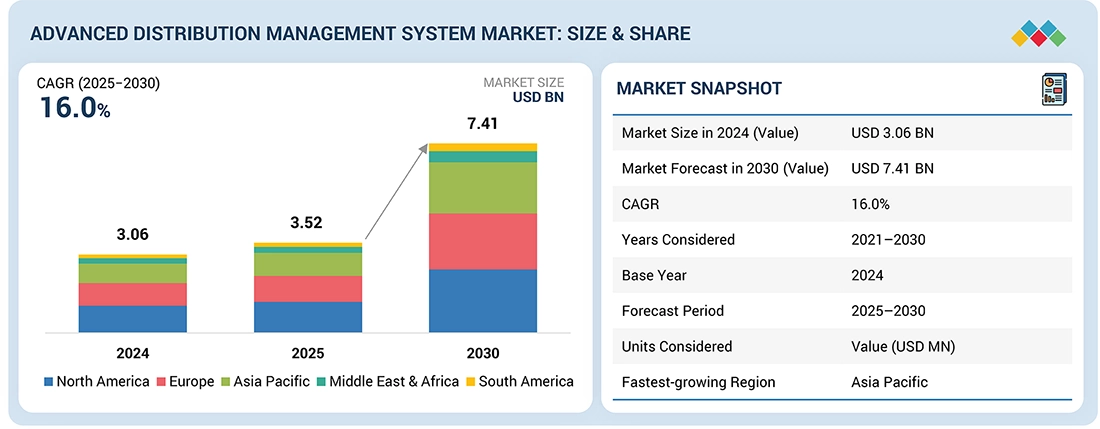
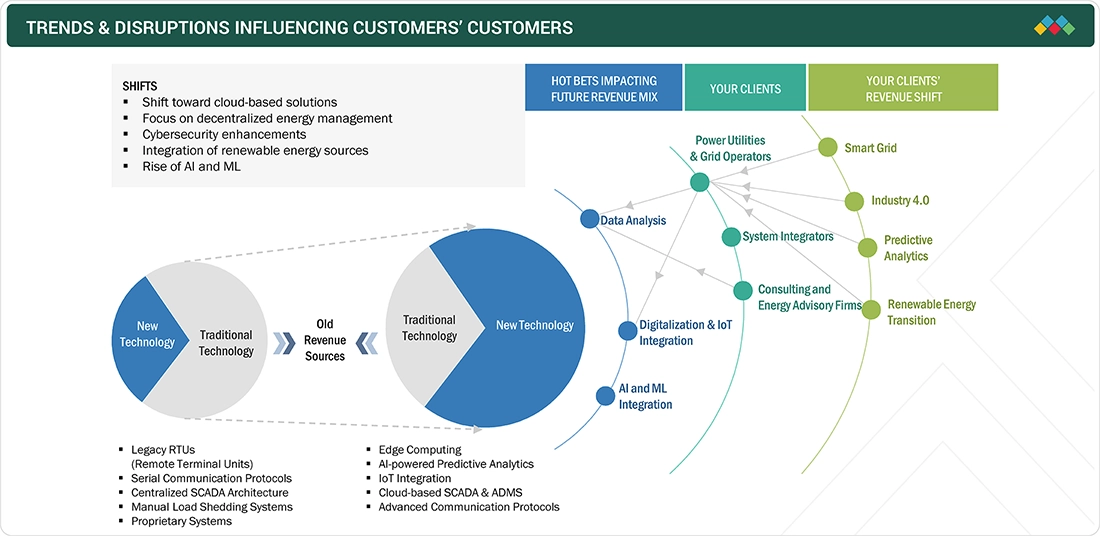




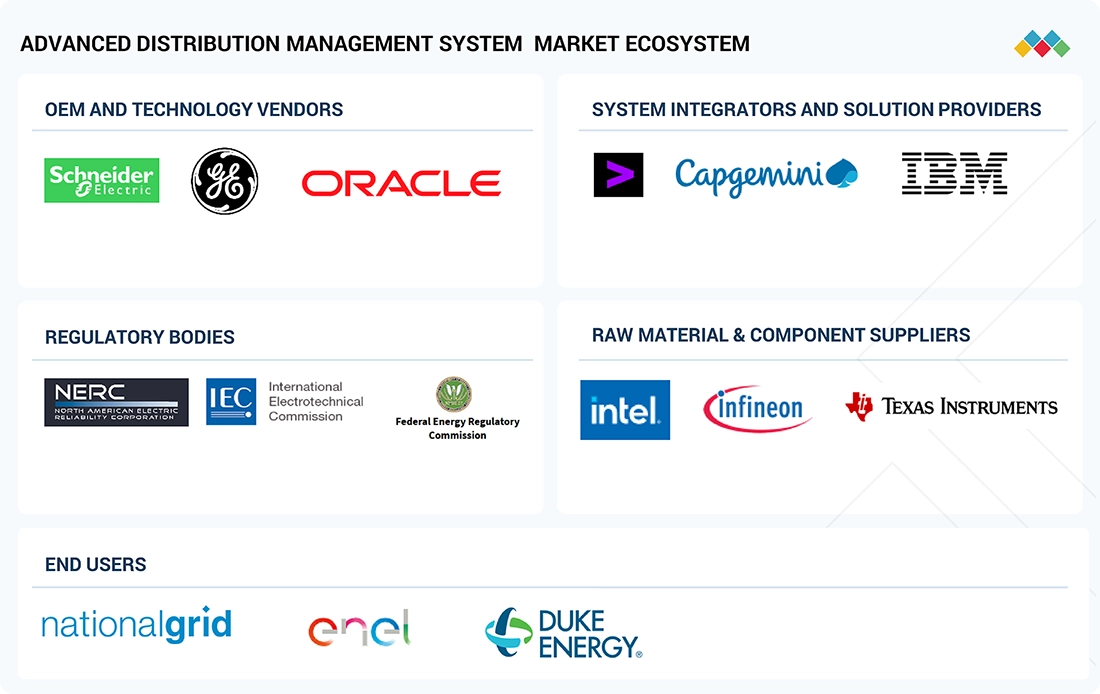
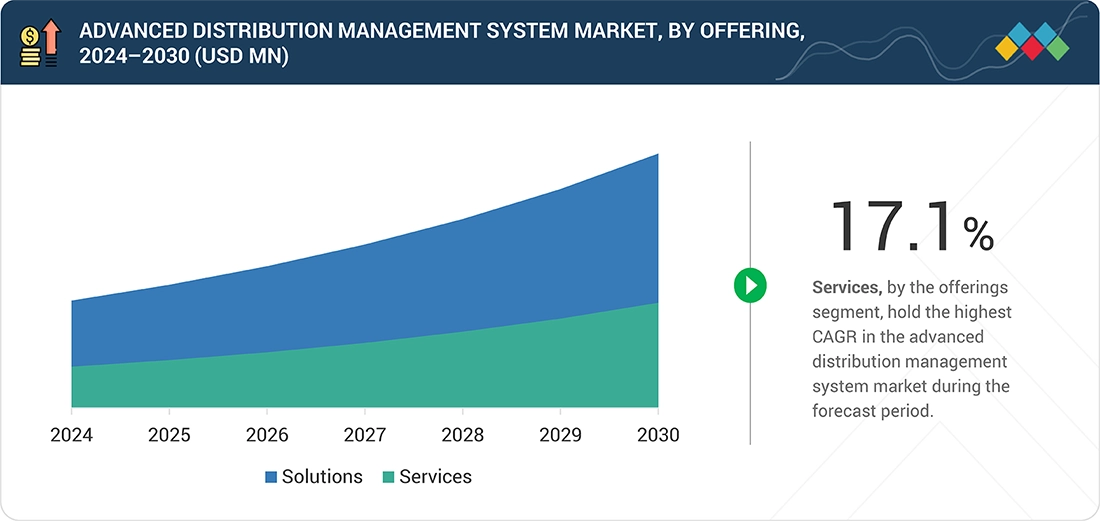
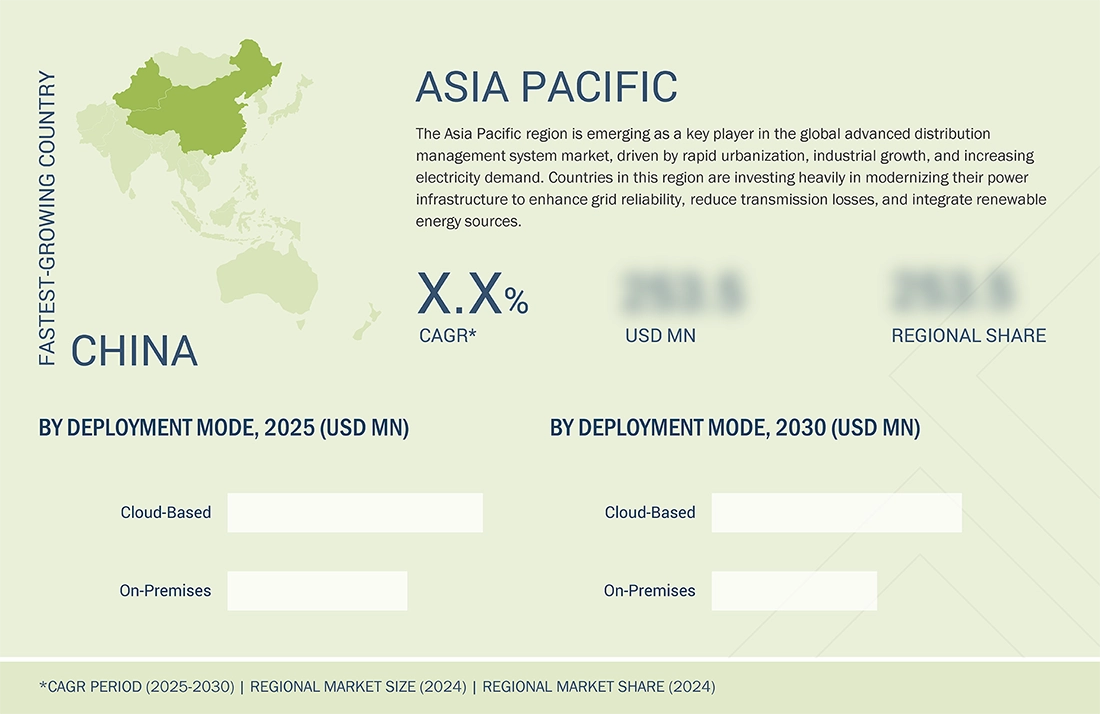
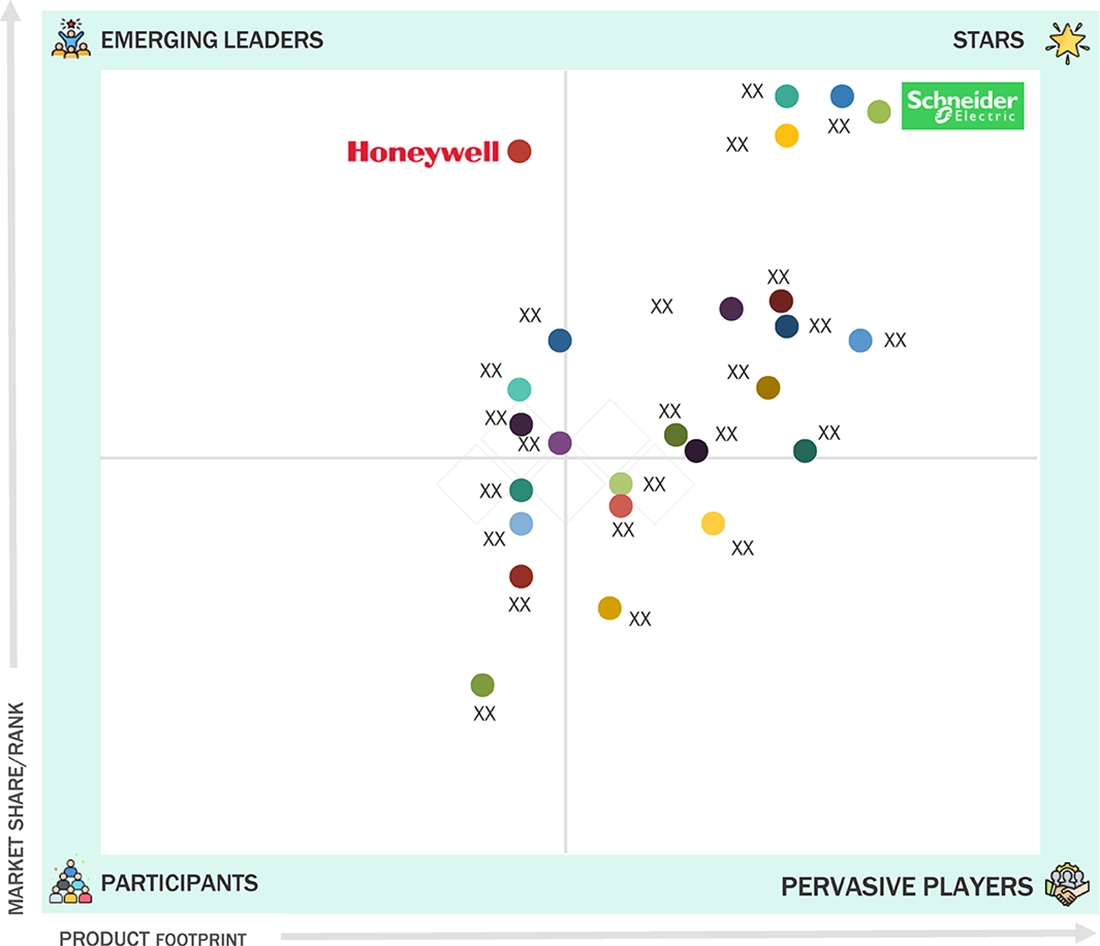
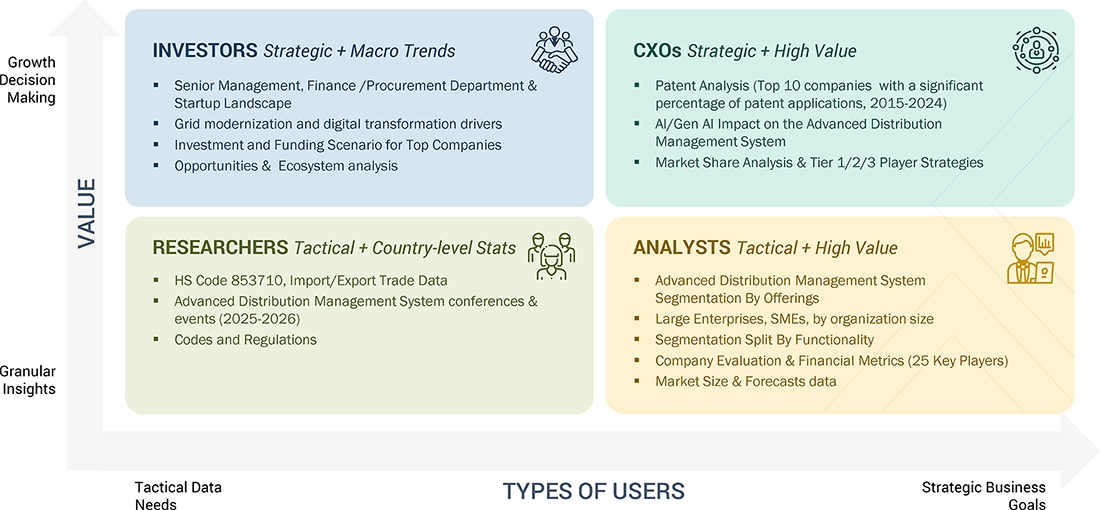

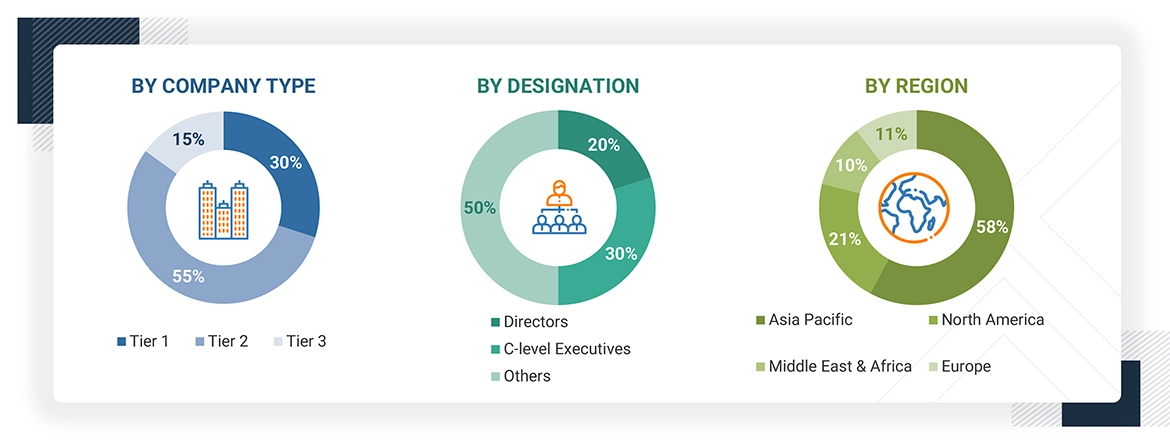
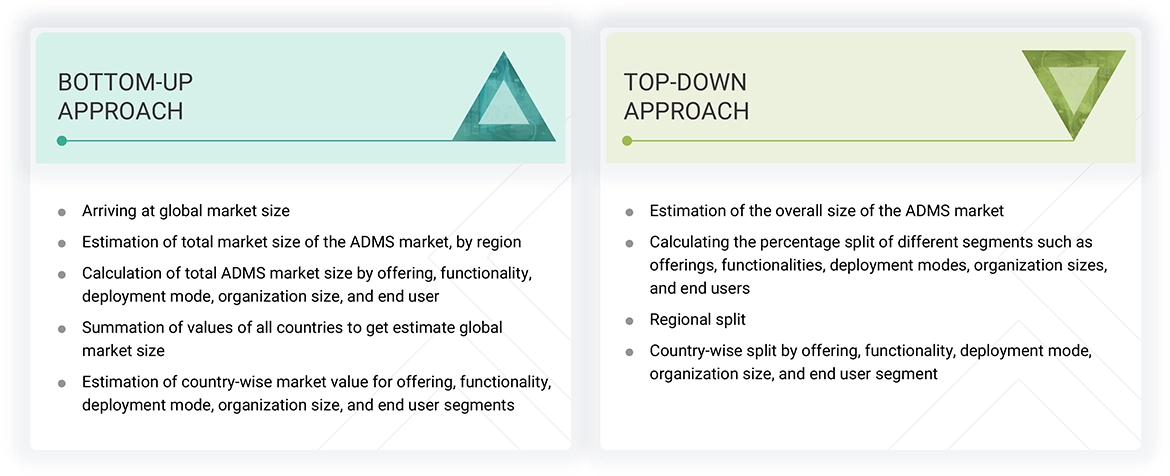













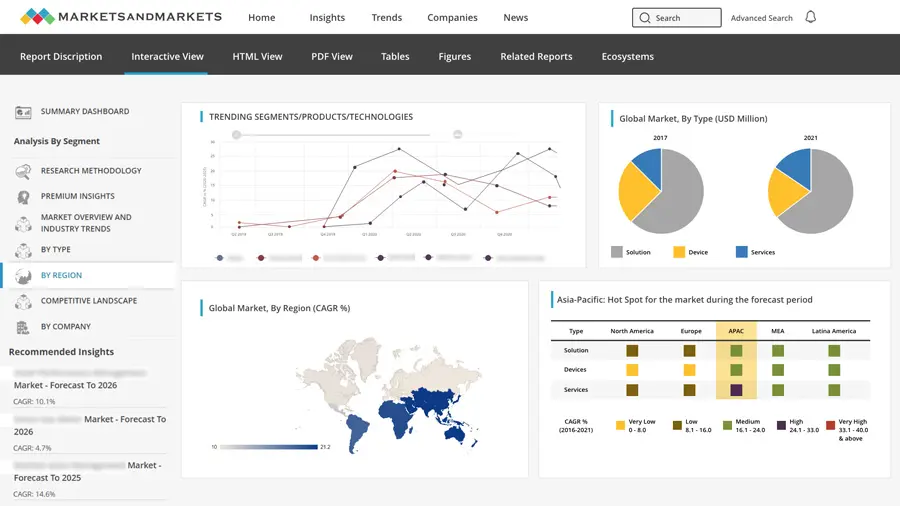
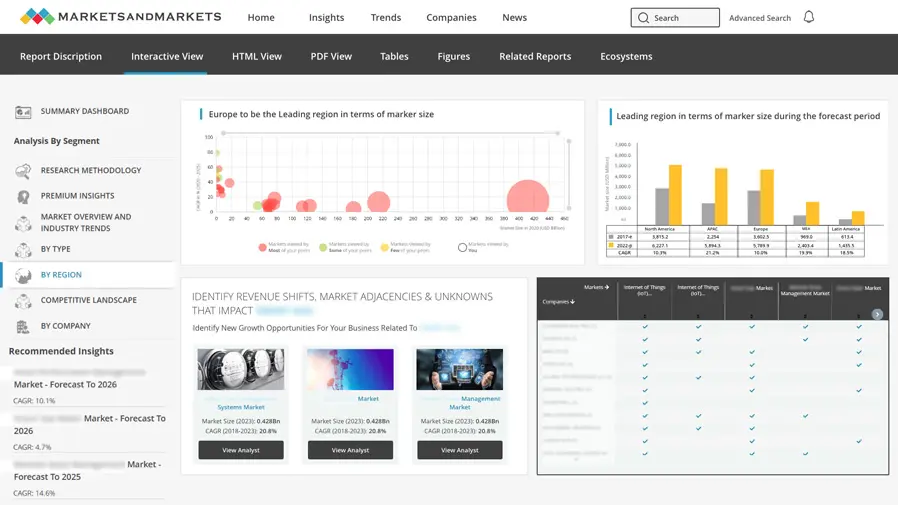
Growth opportunities and latent adjacency in Advanced Distribution Management System Market